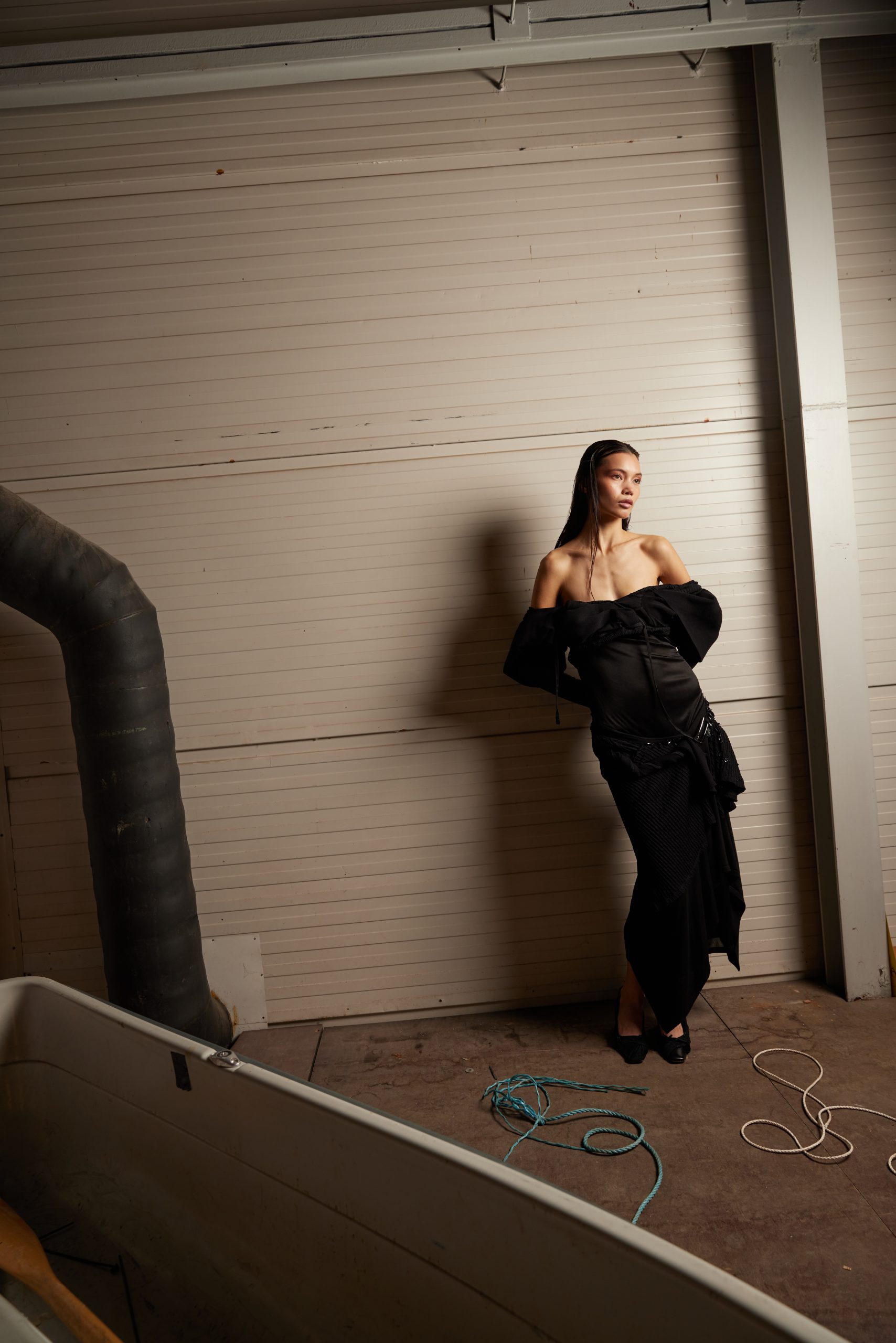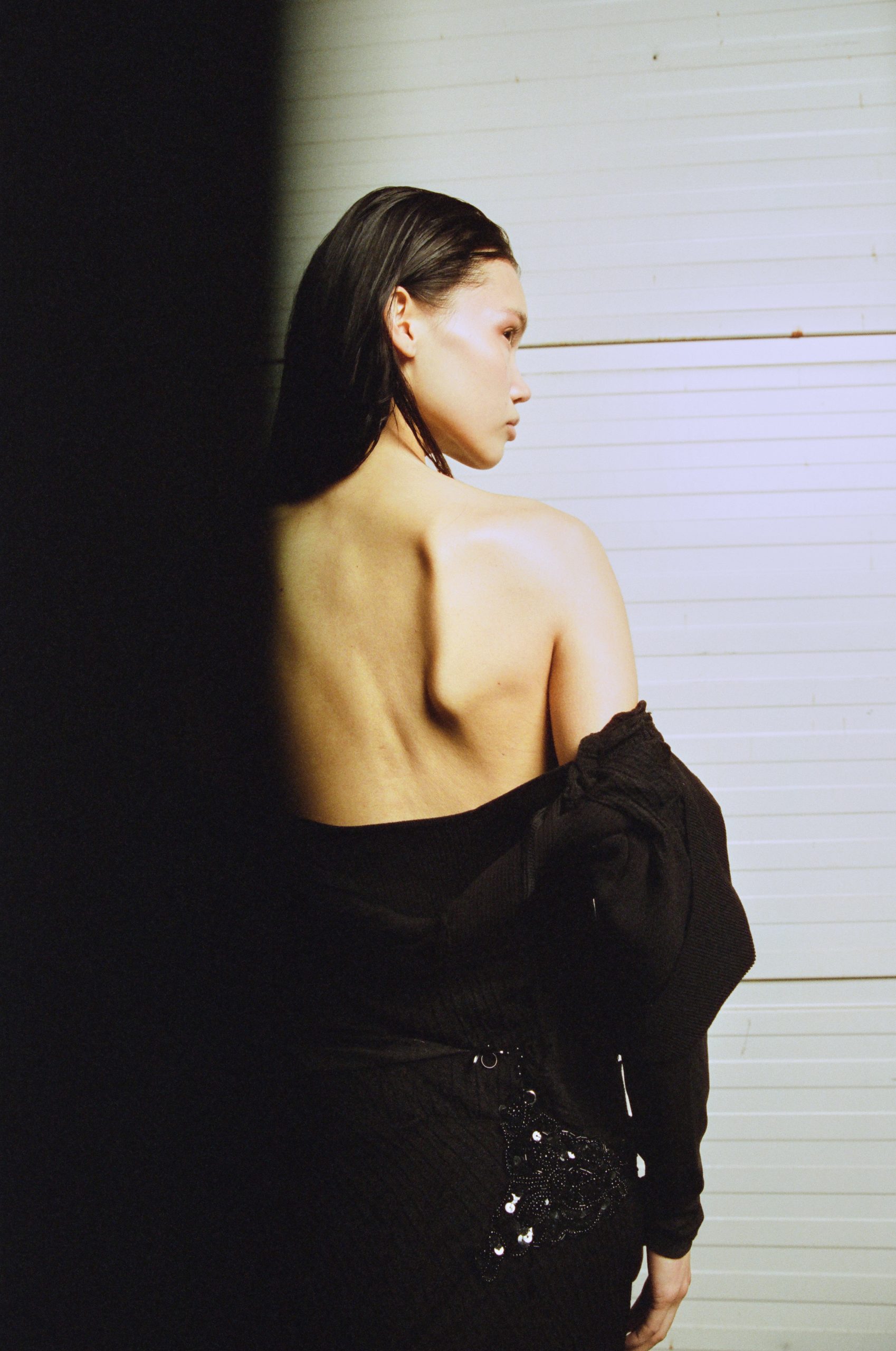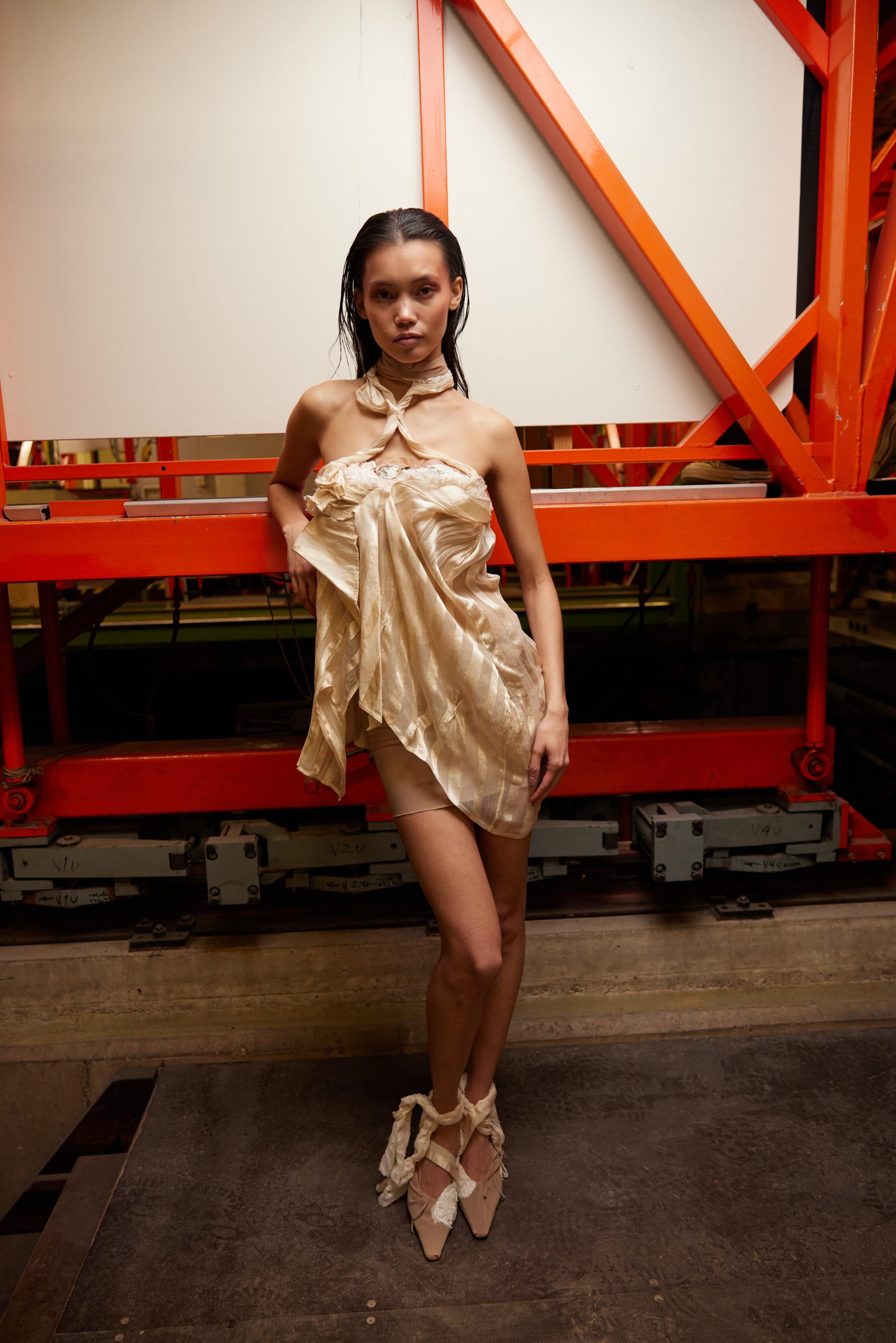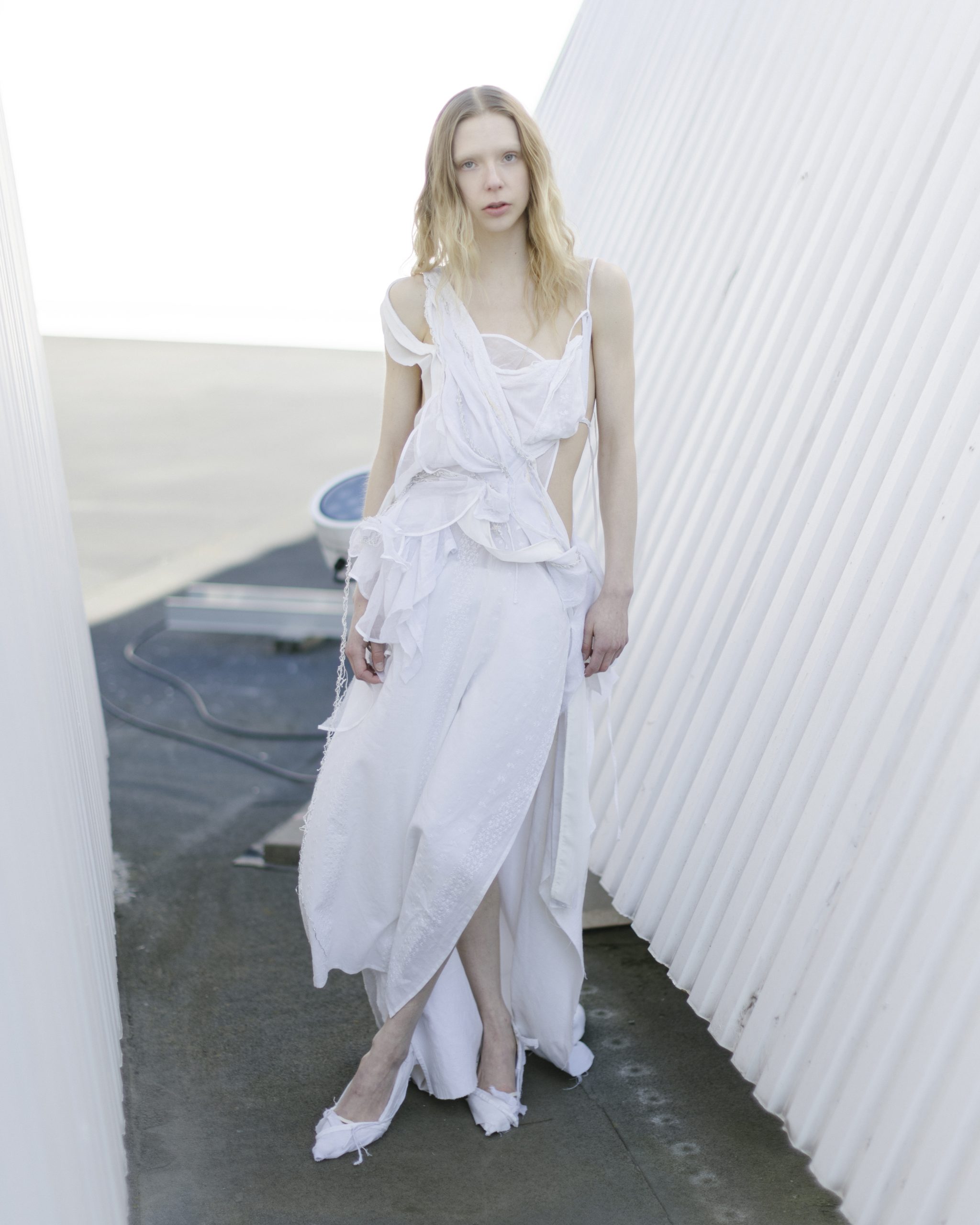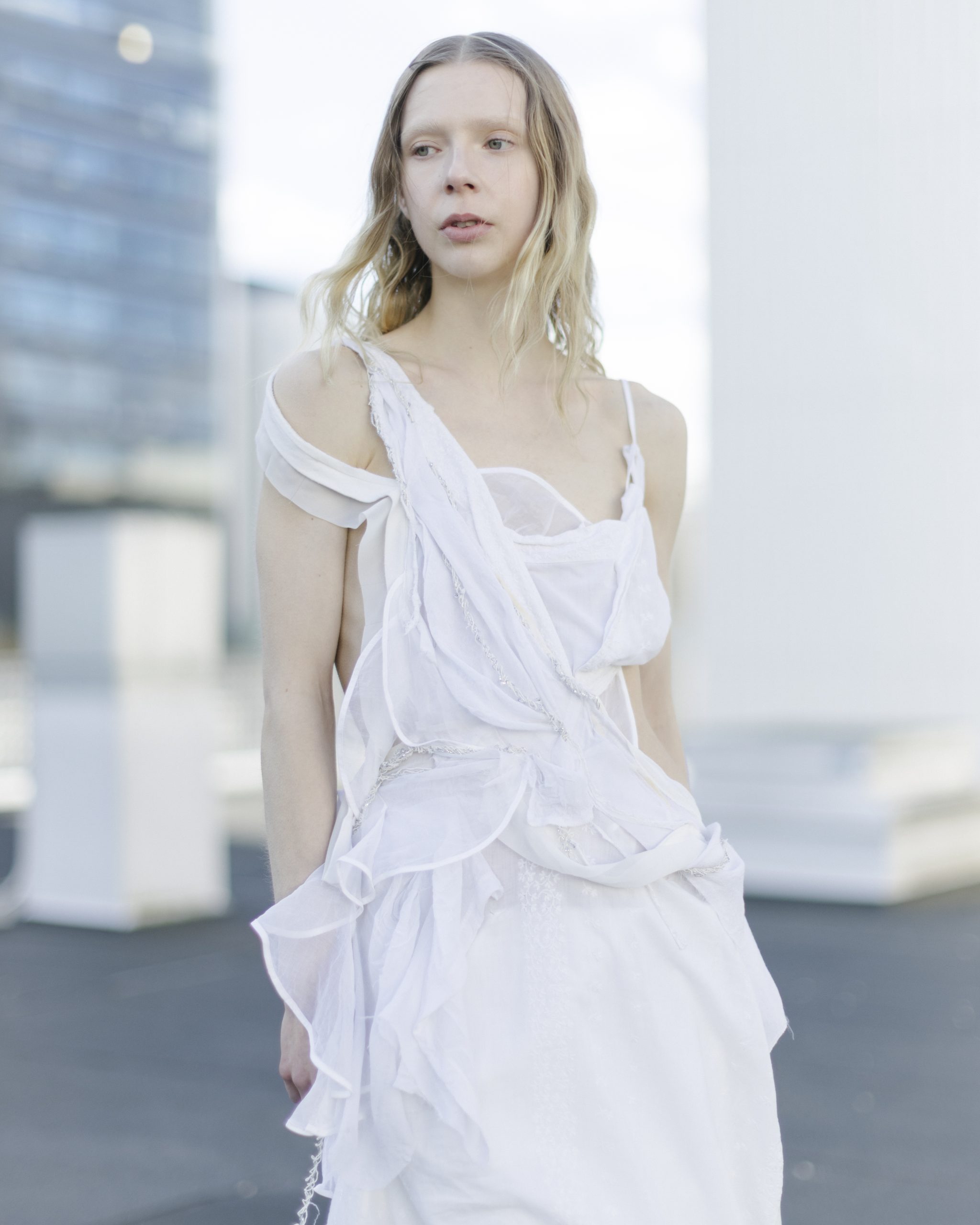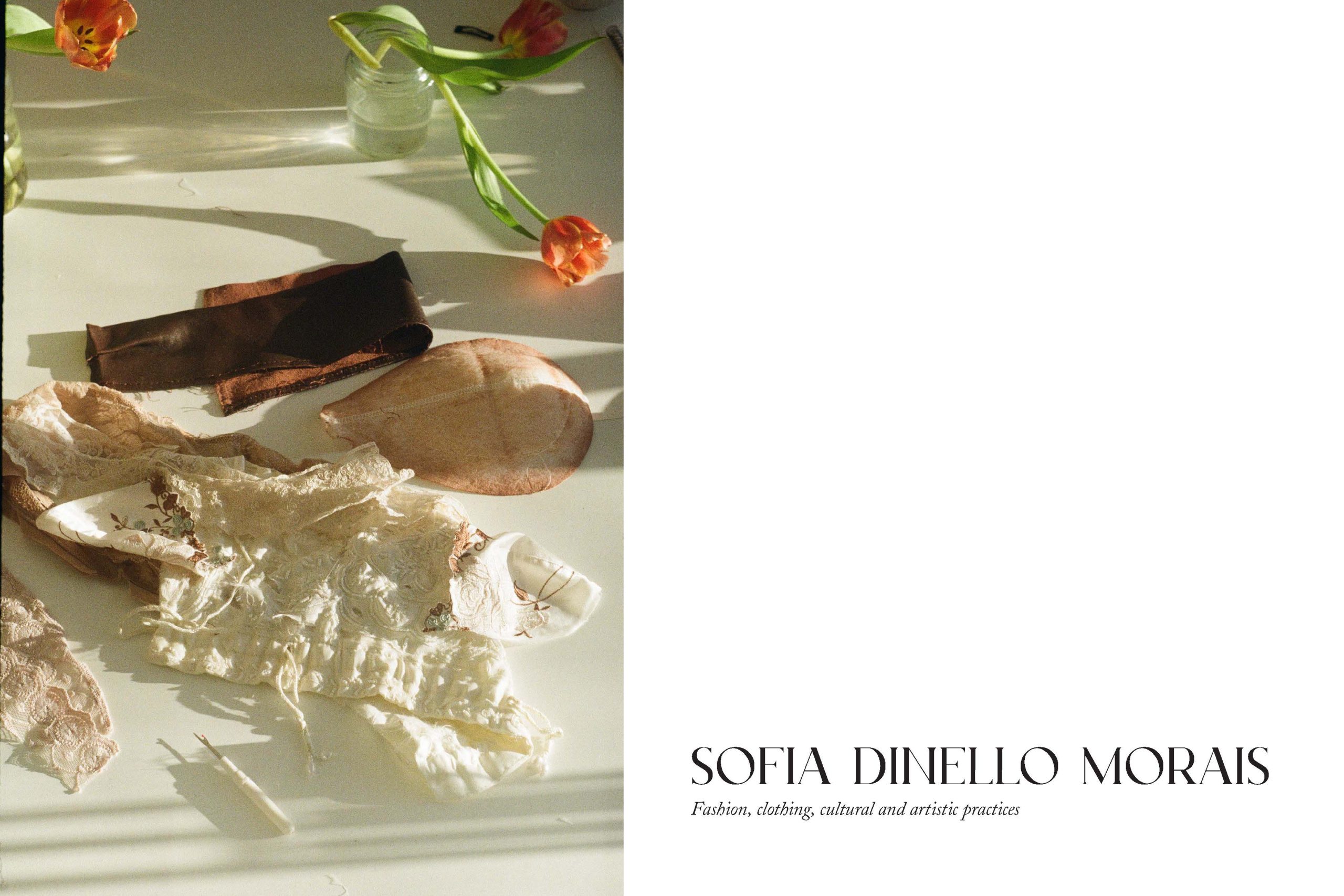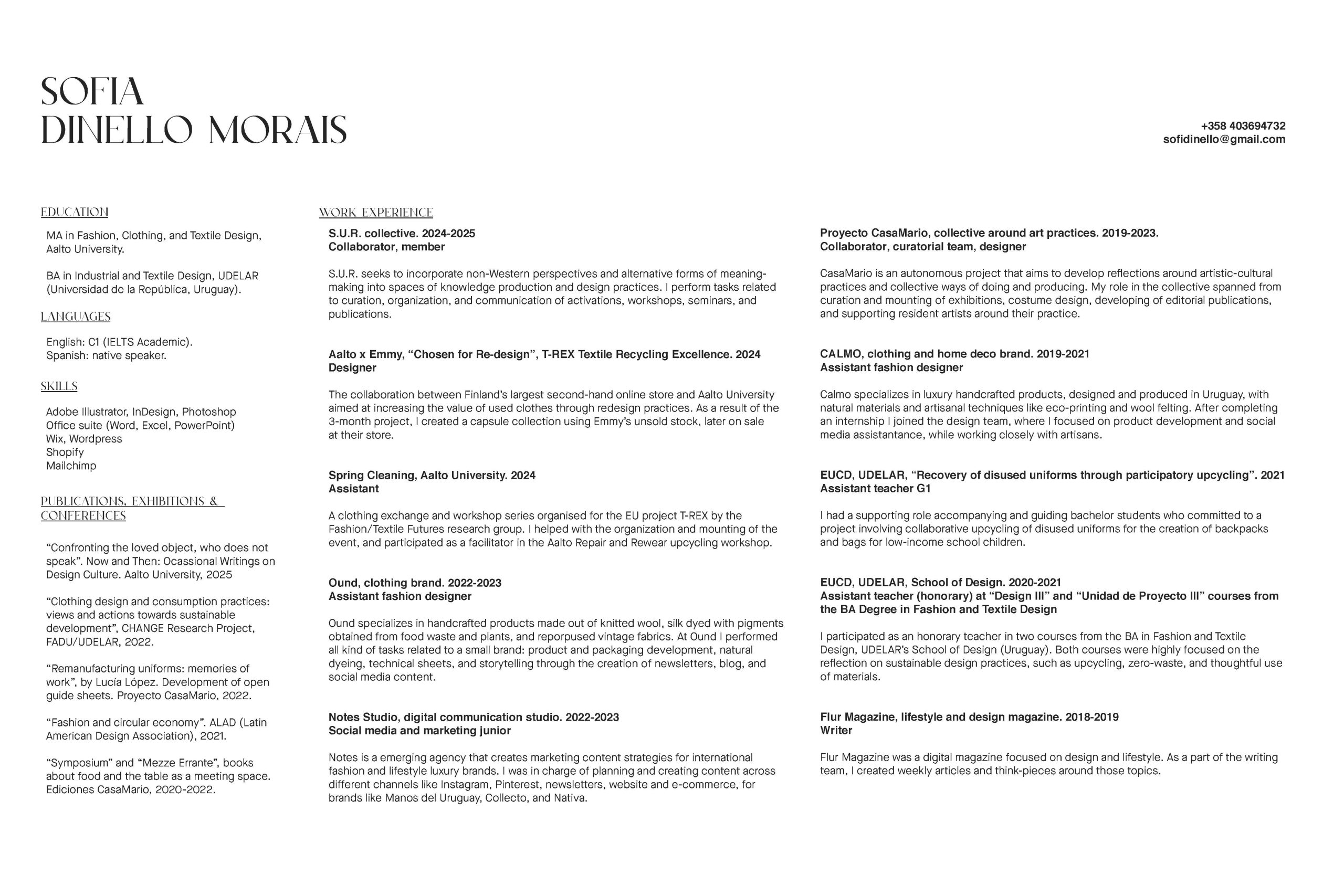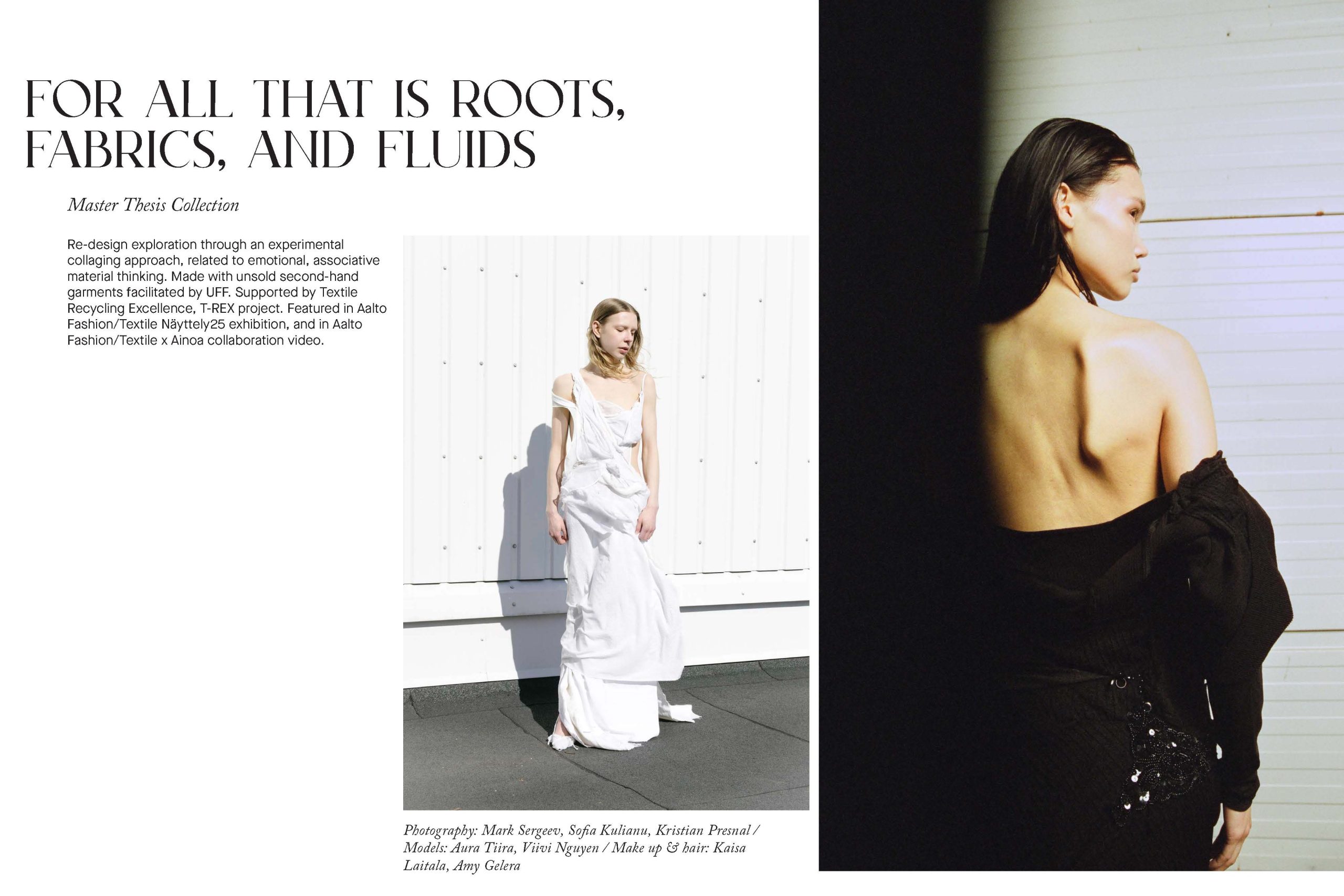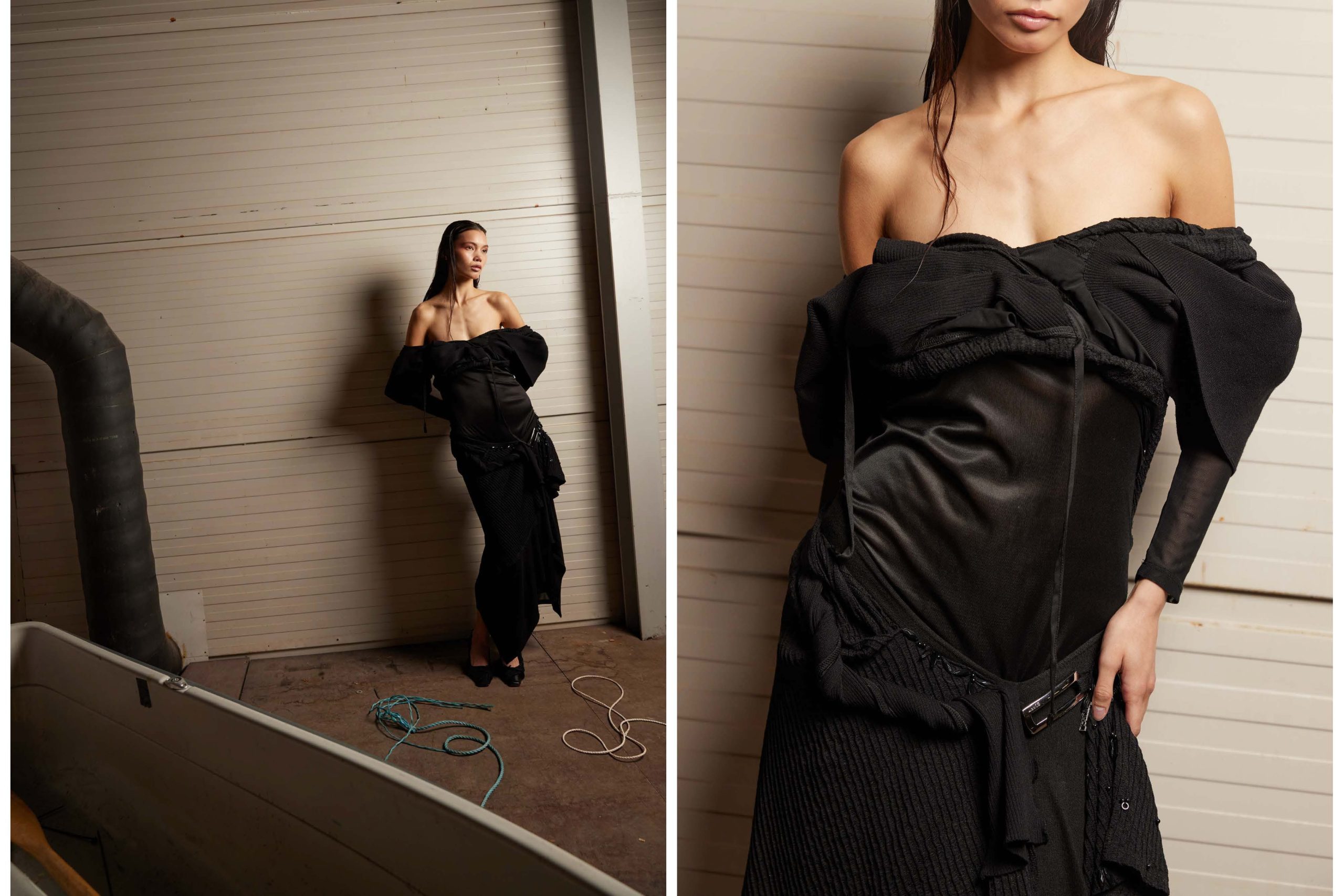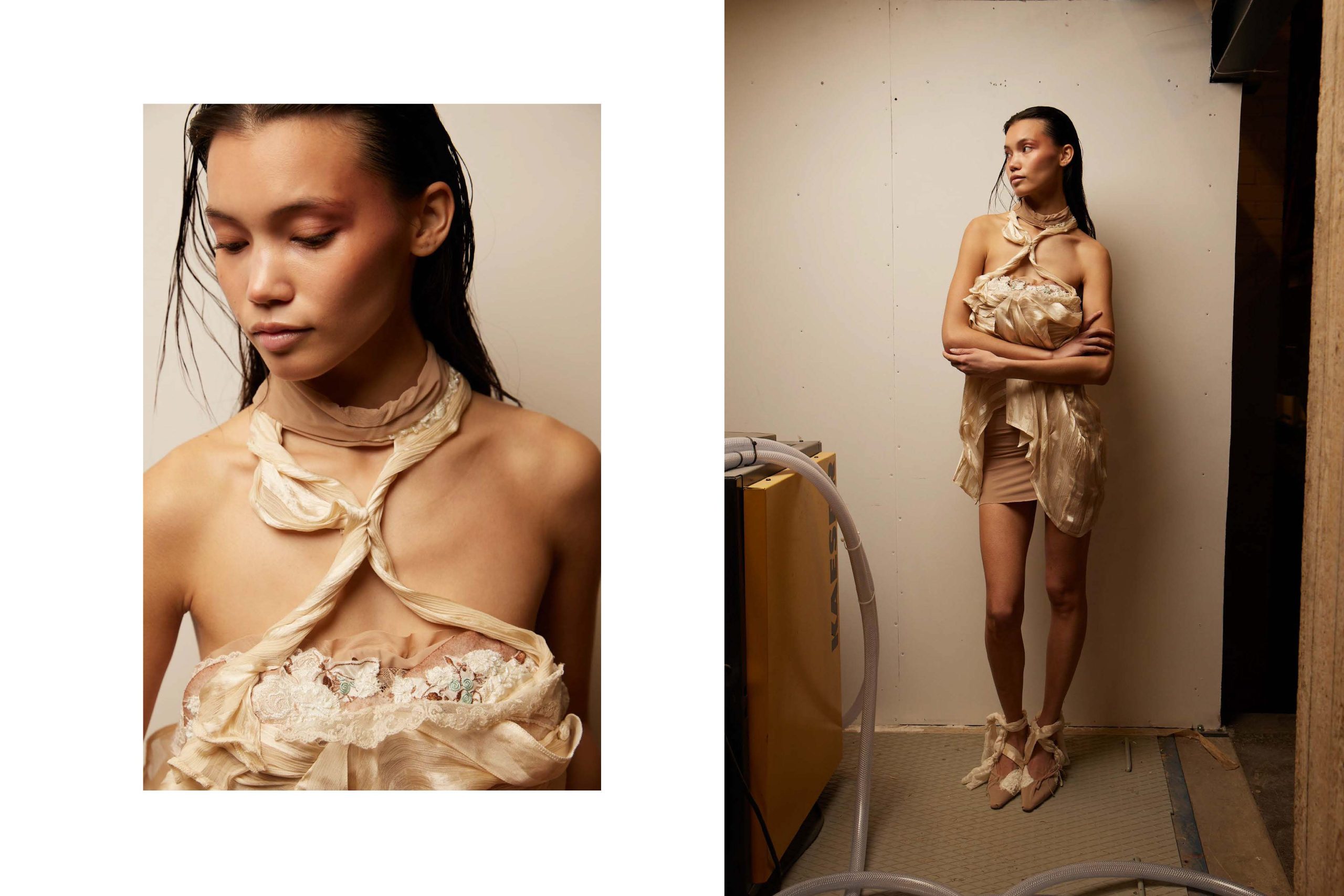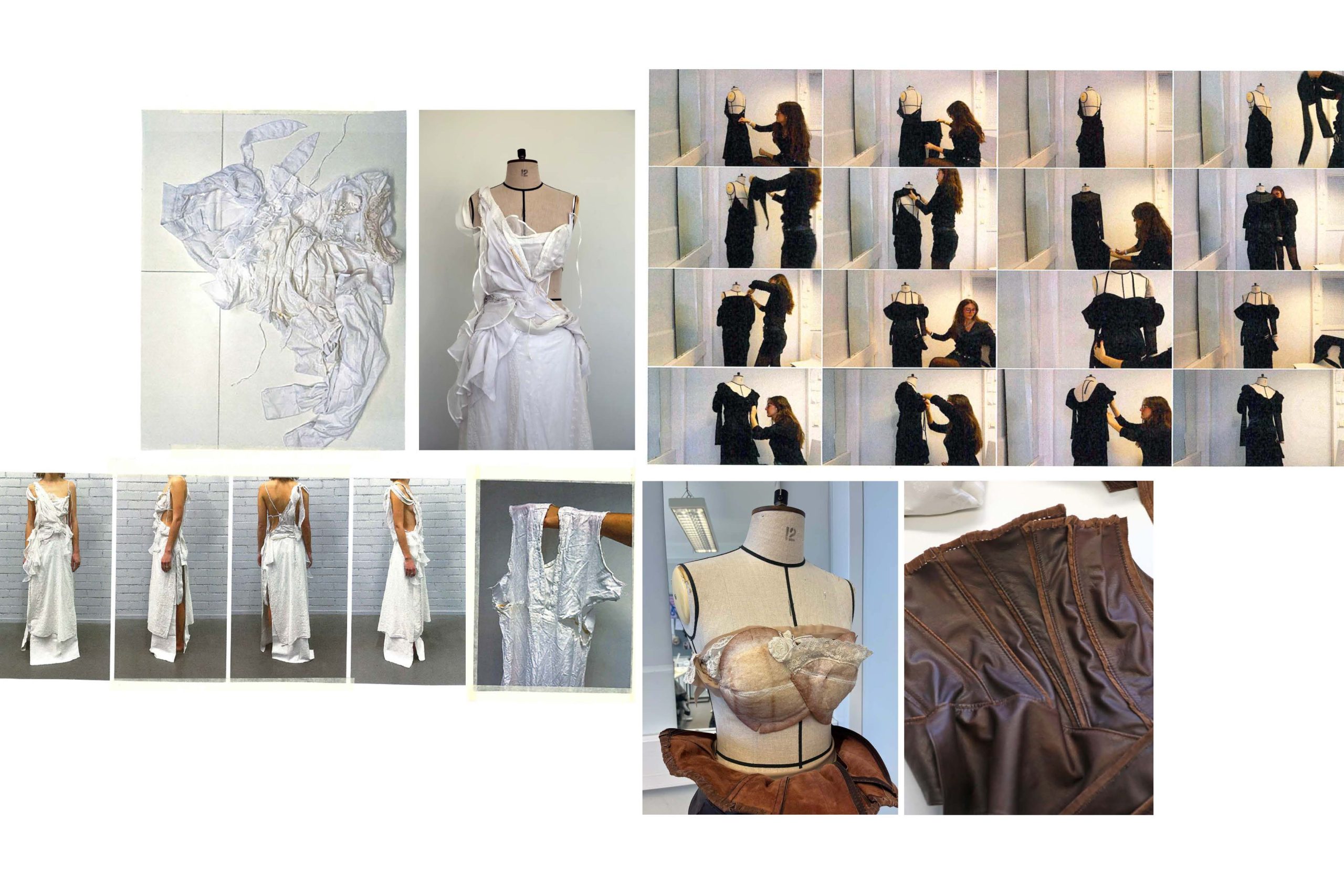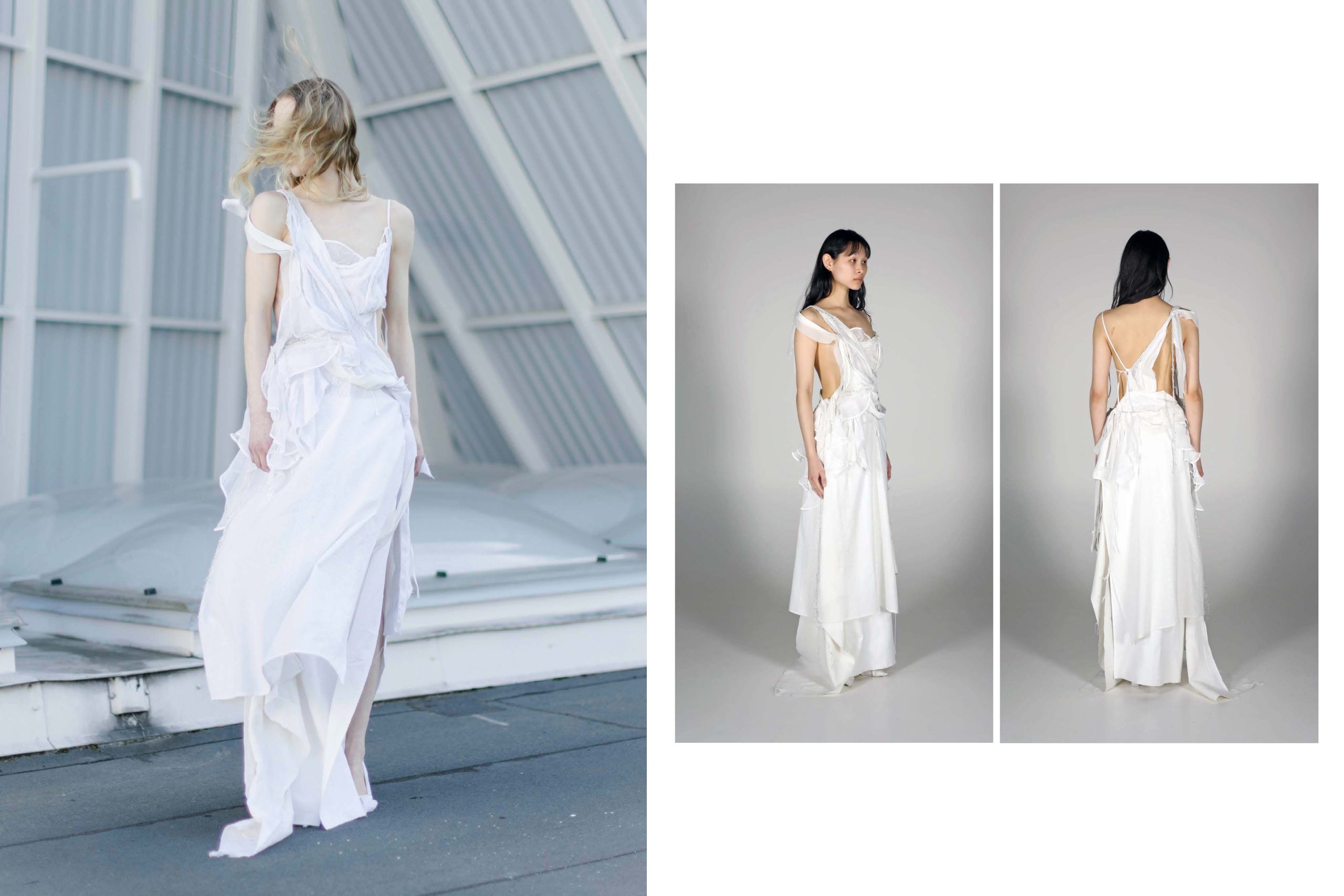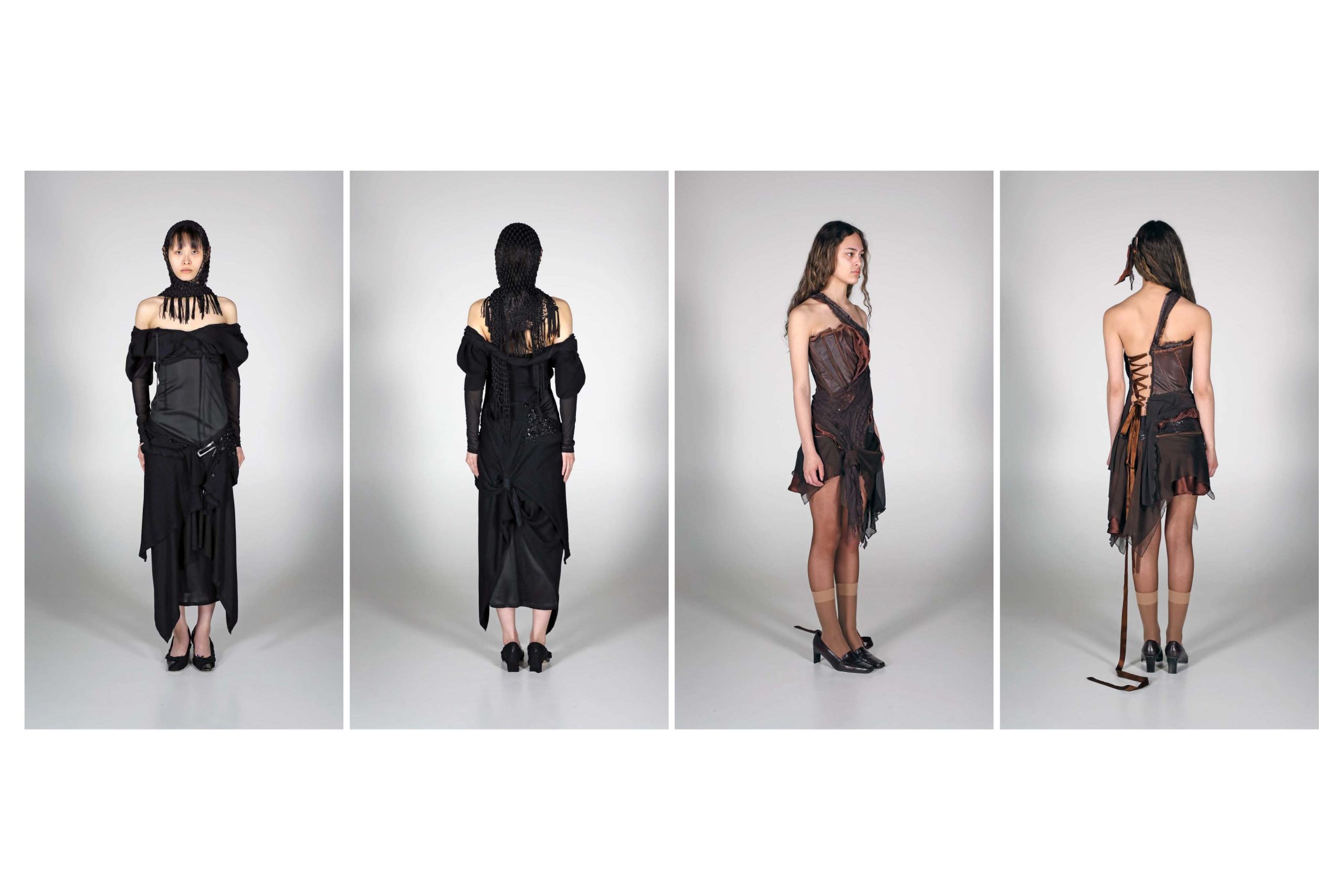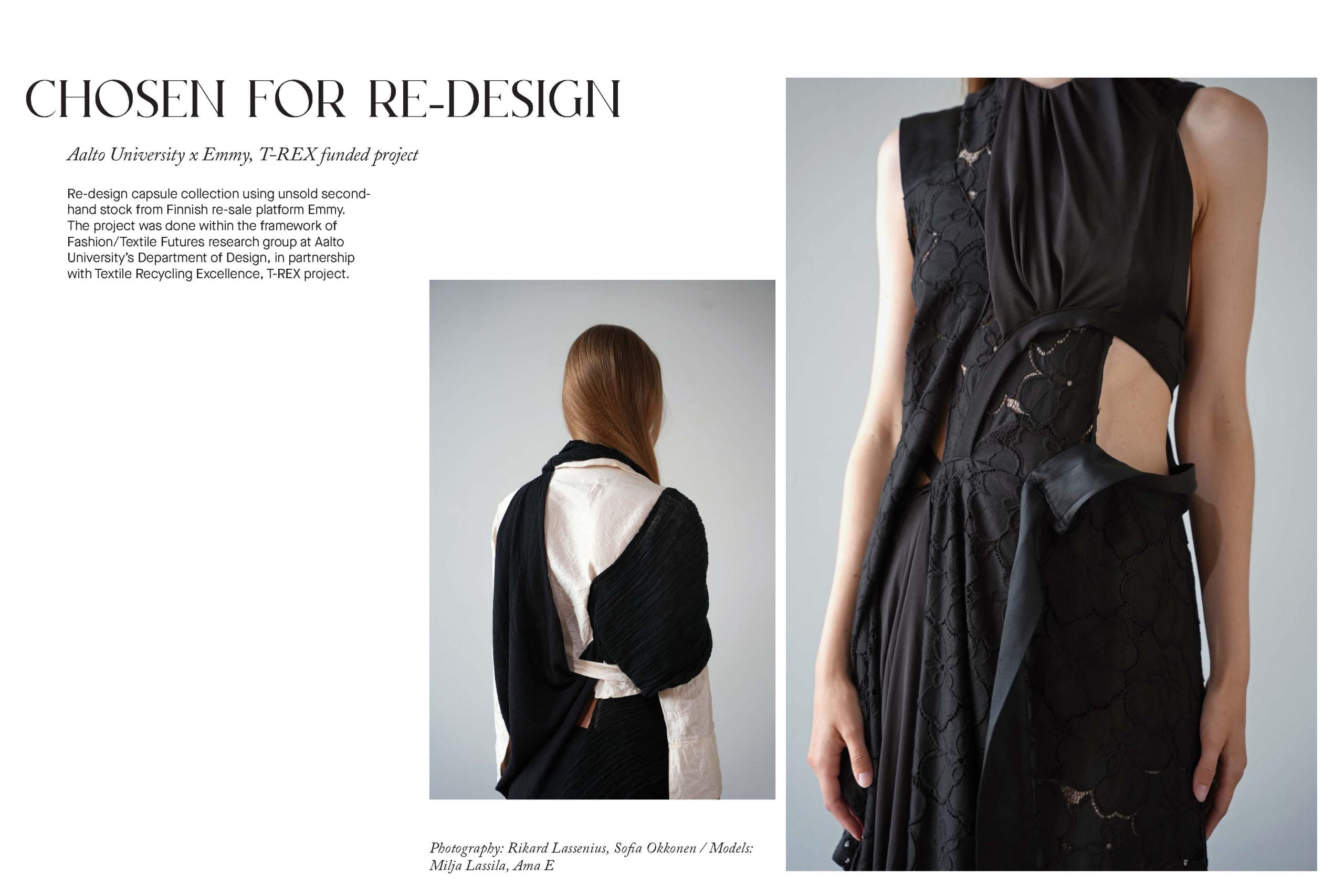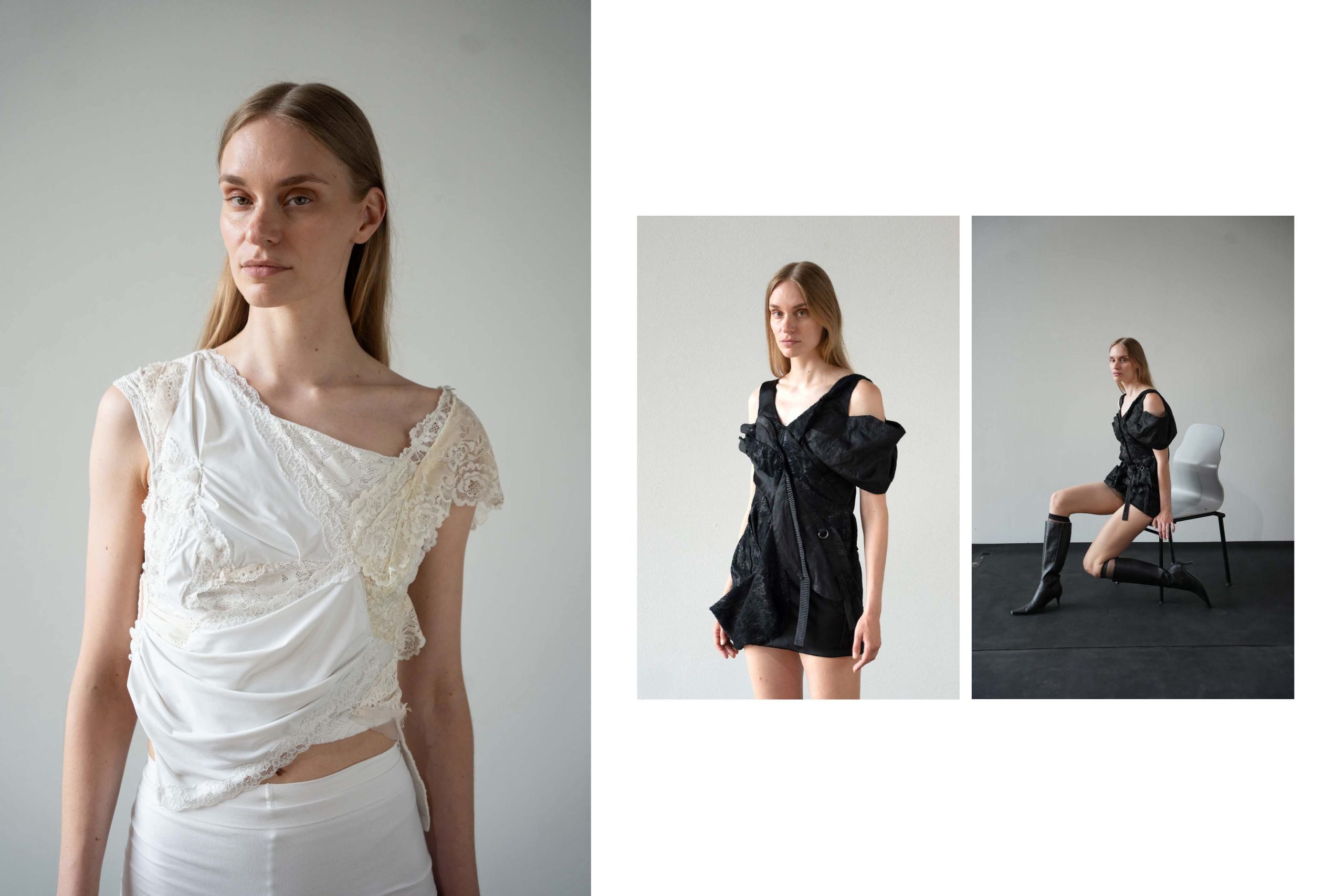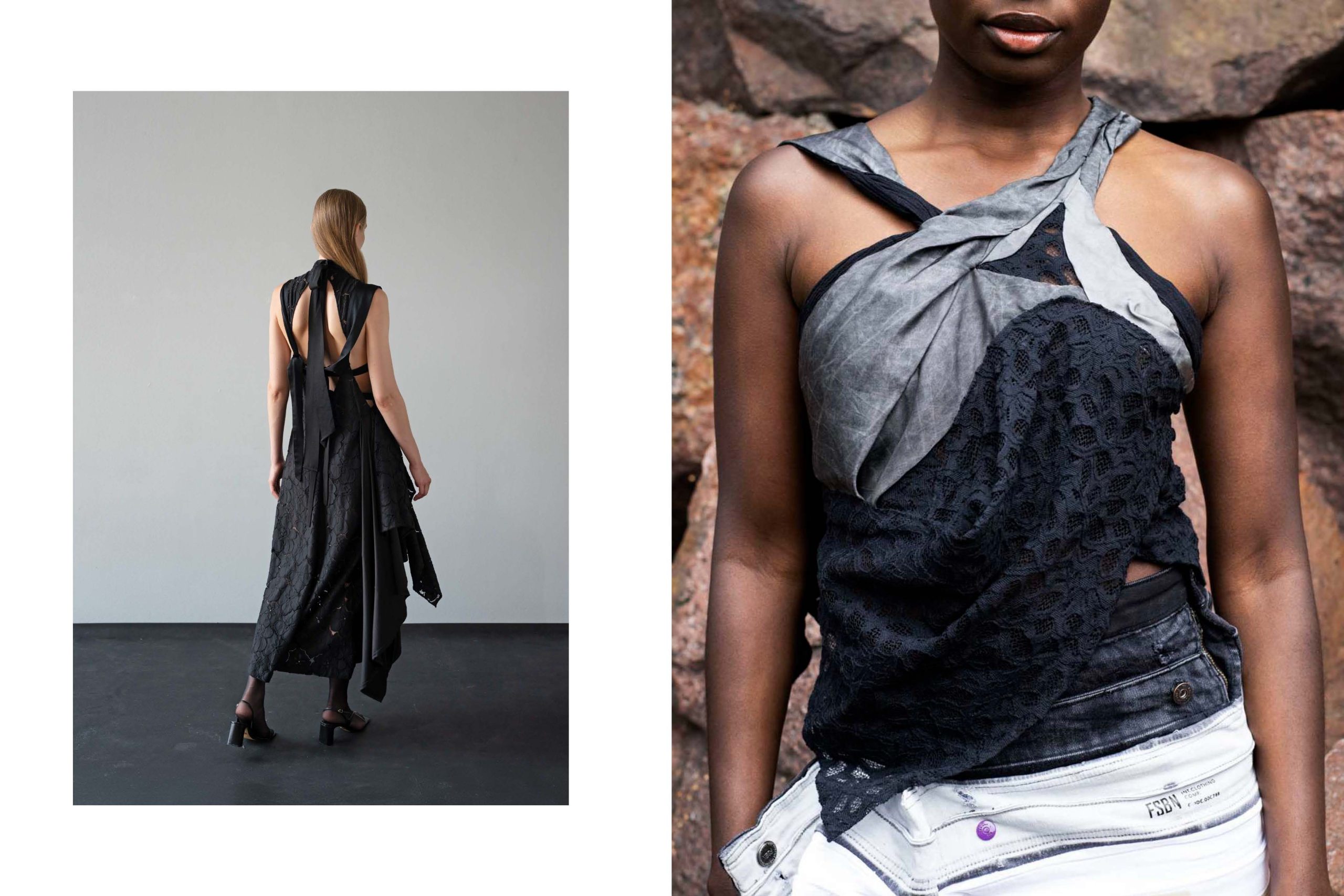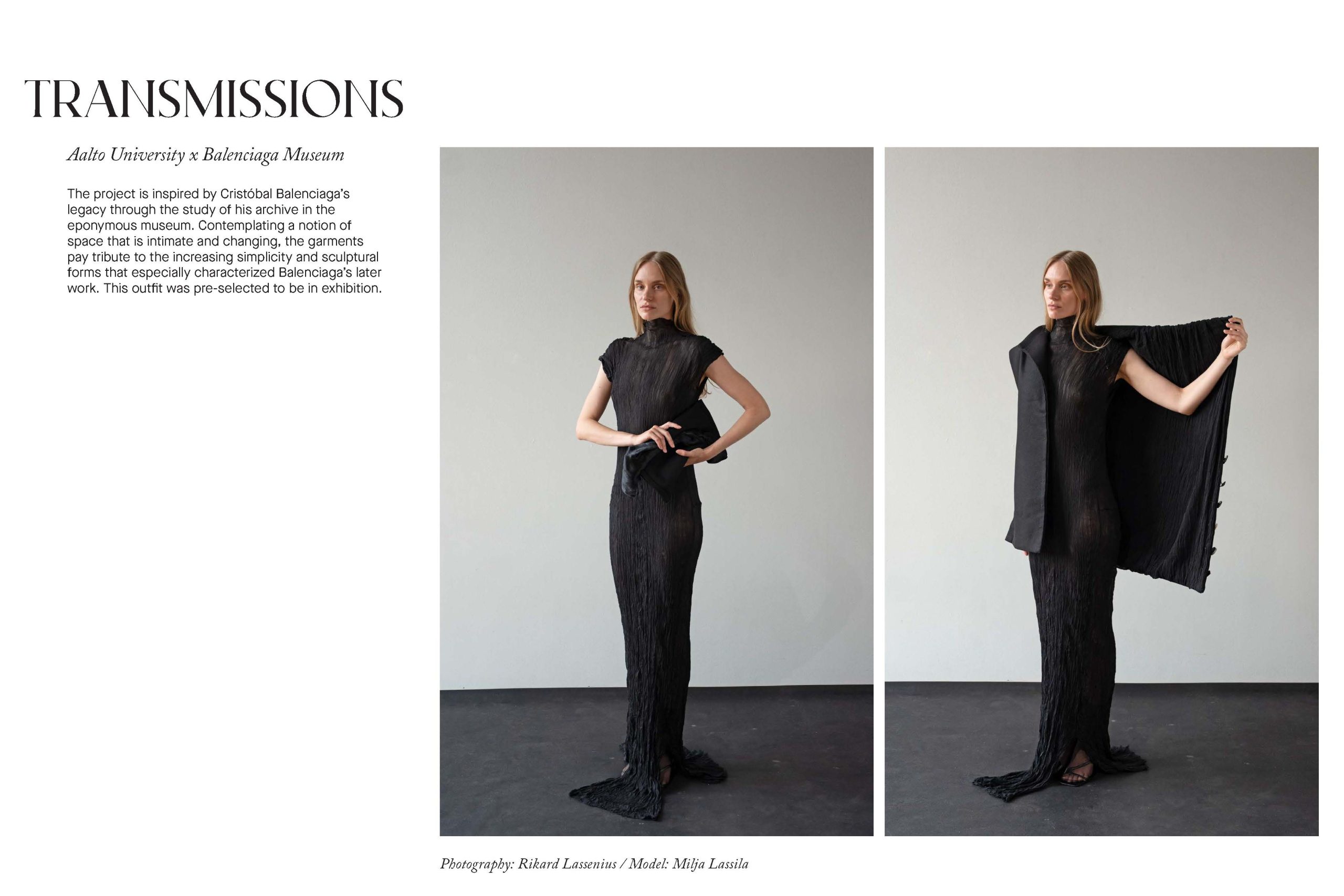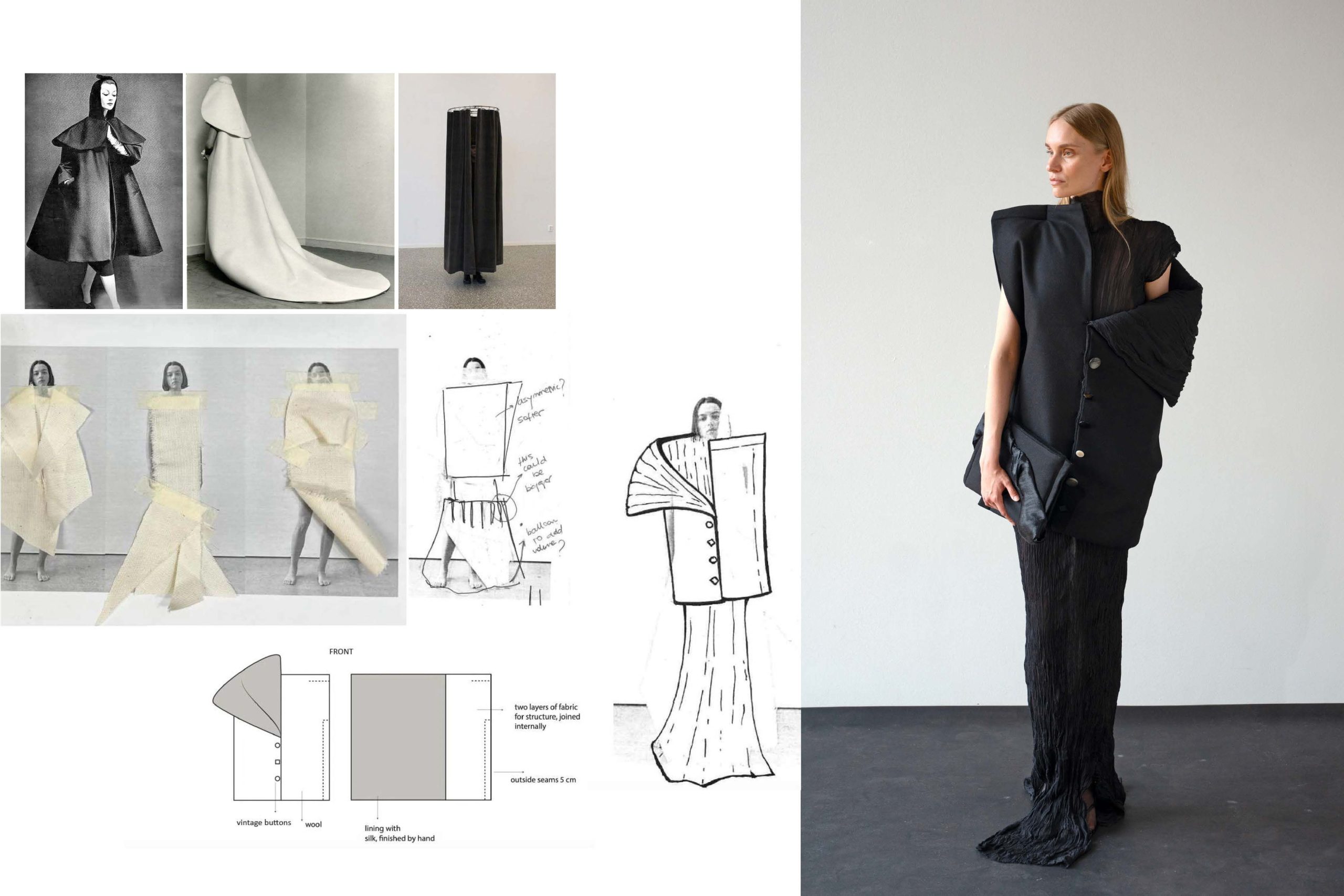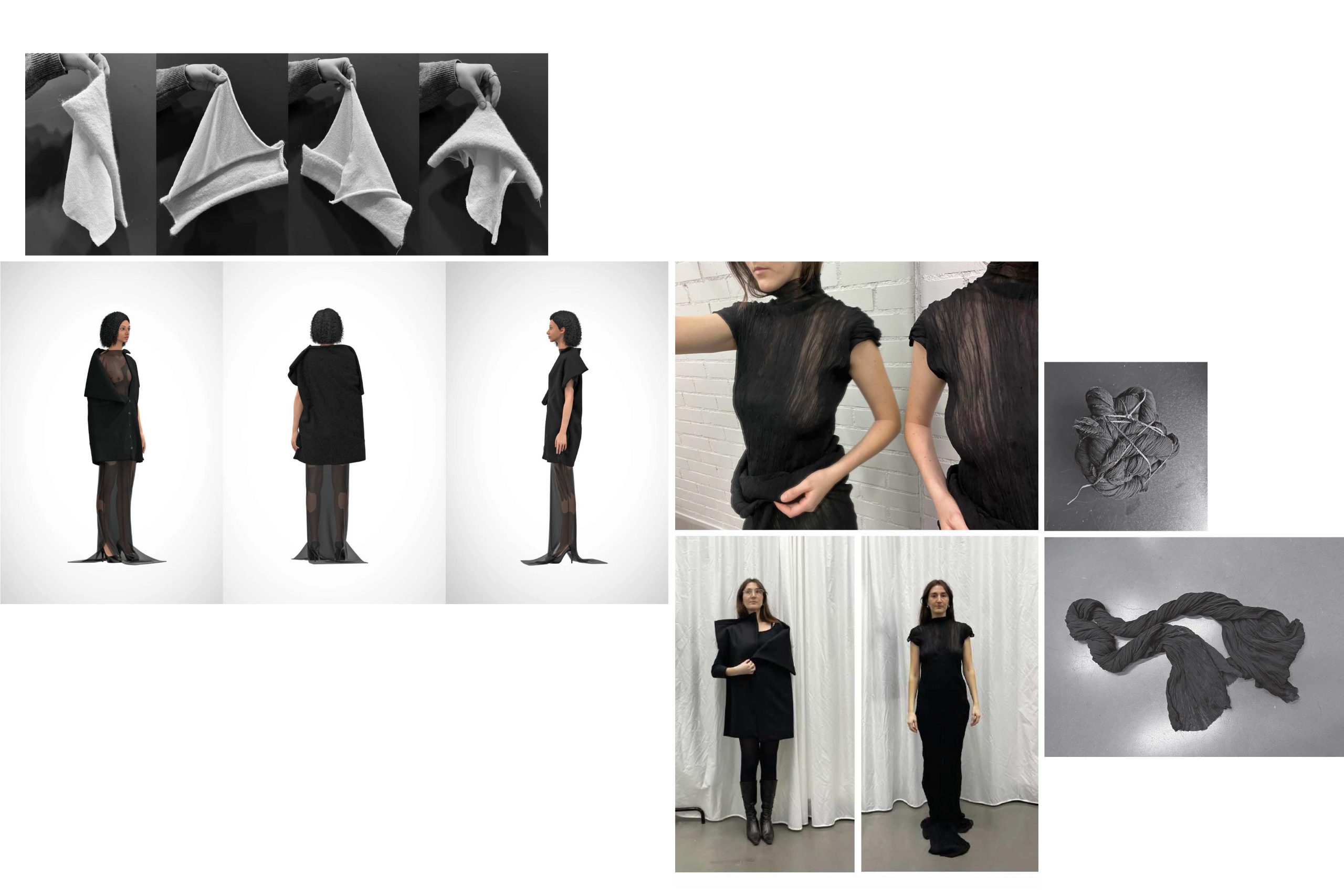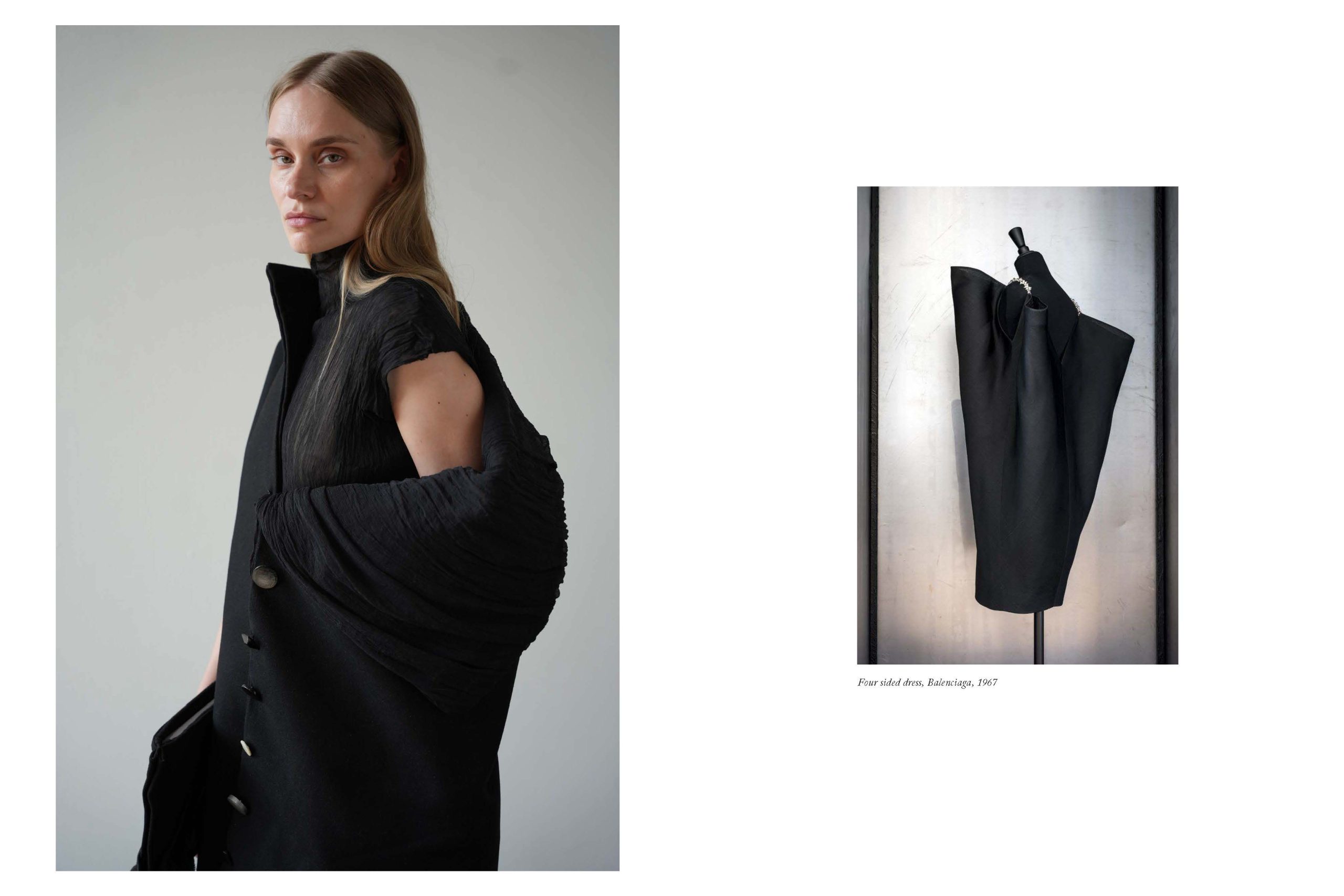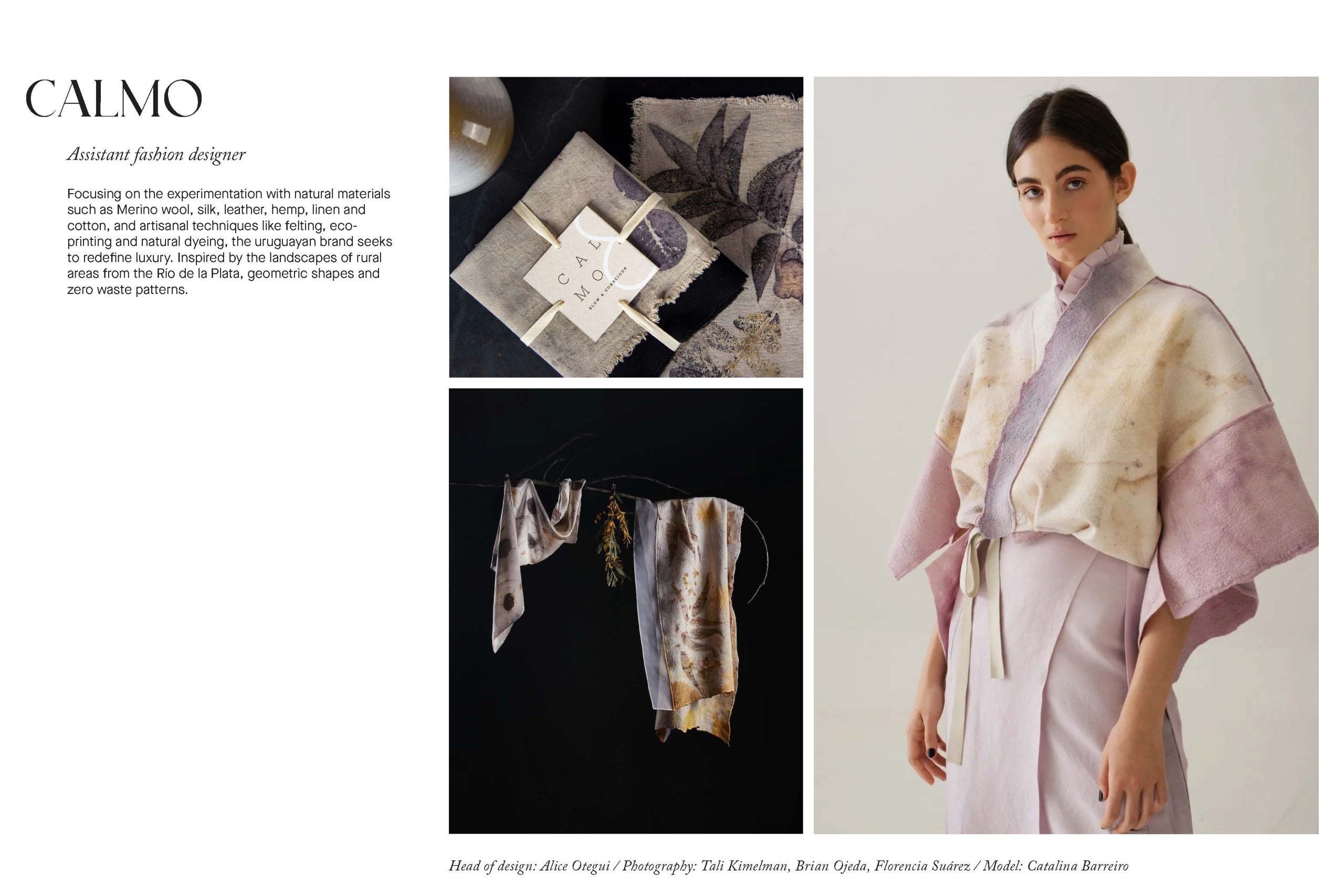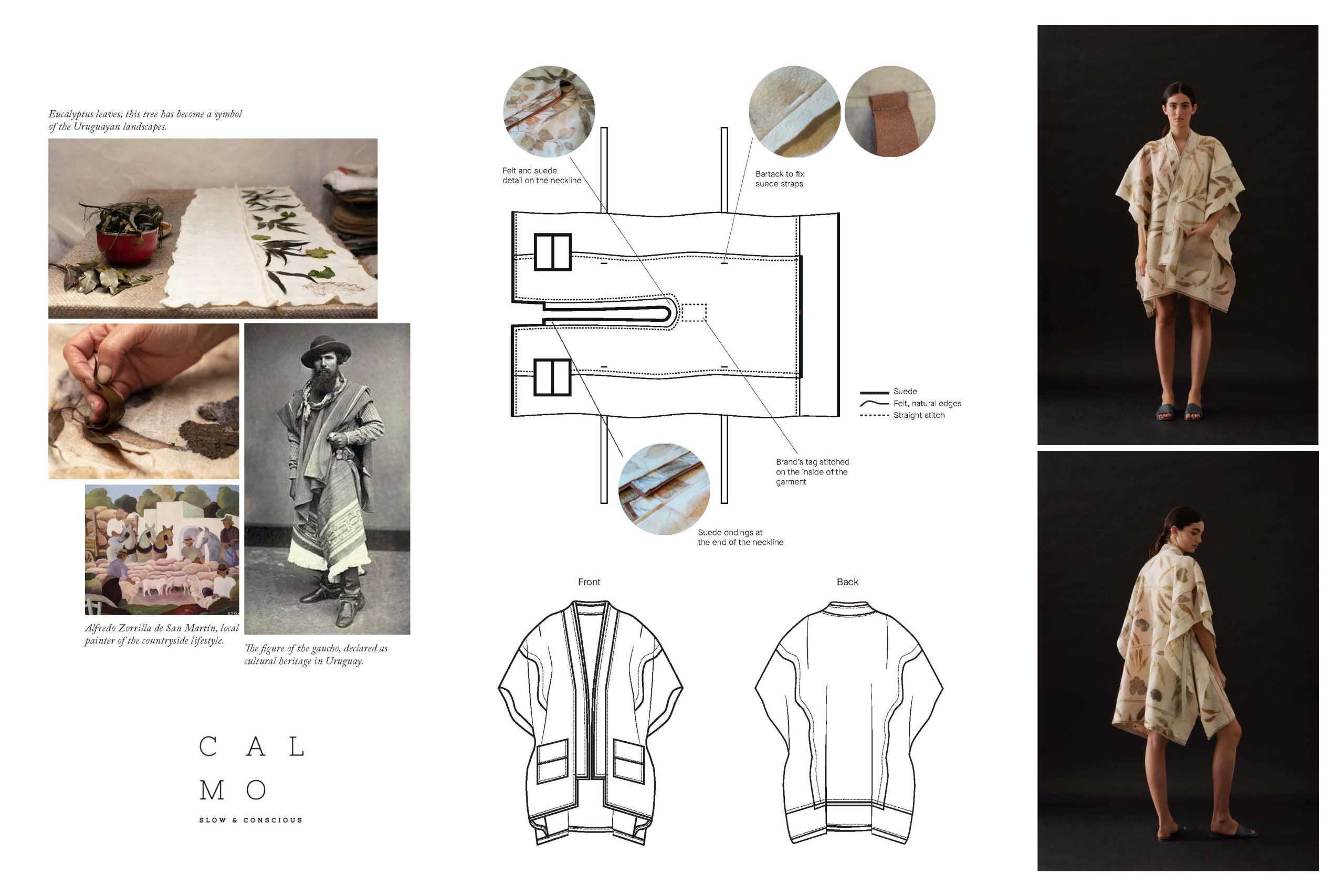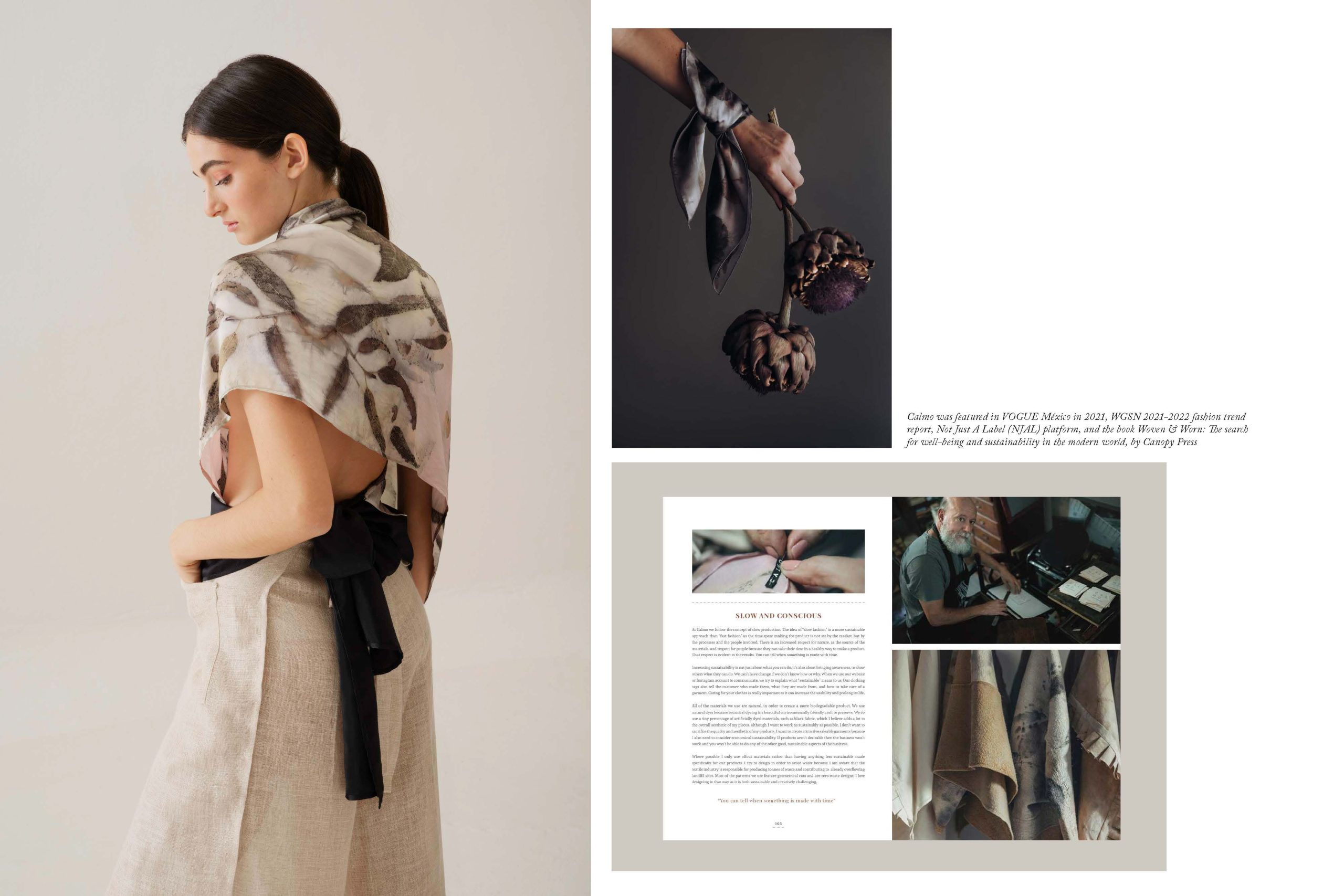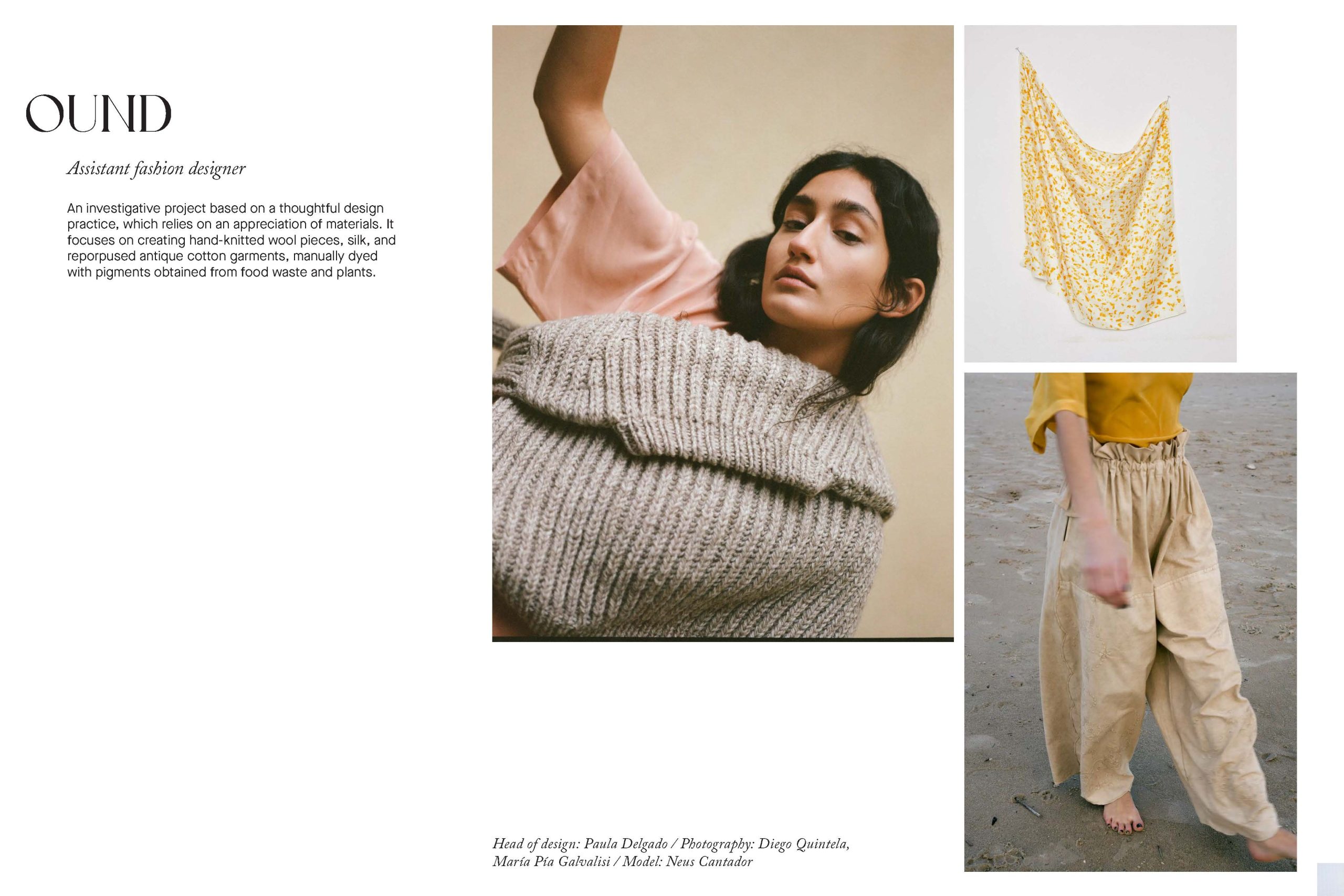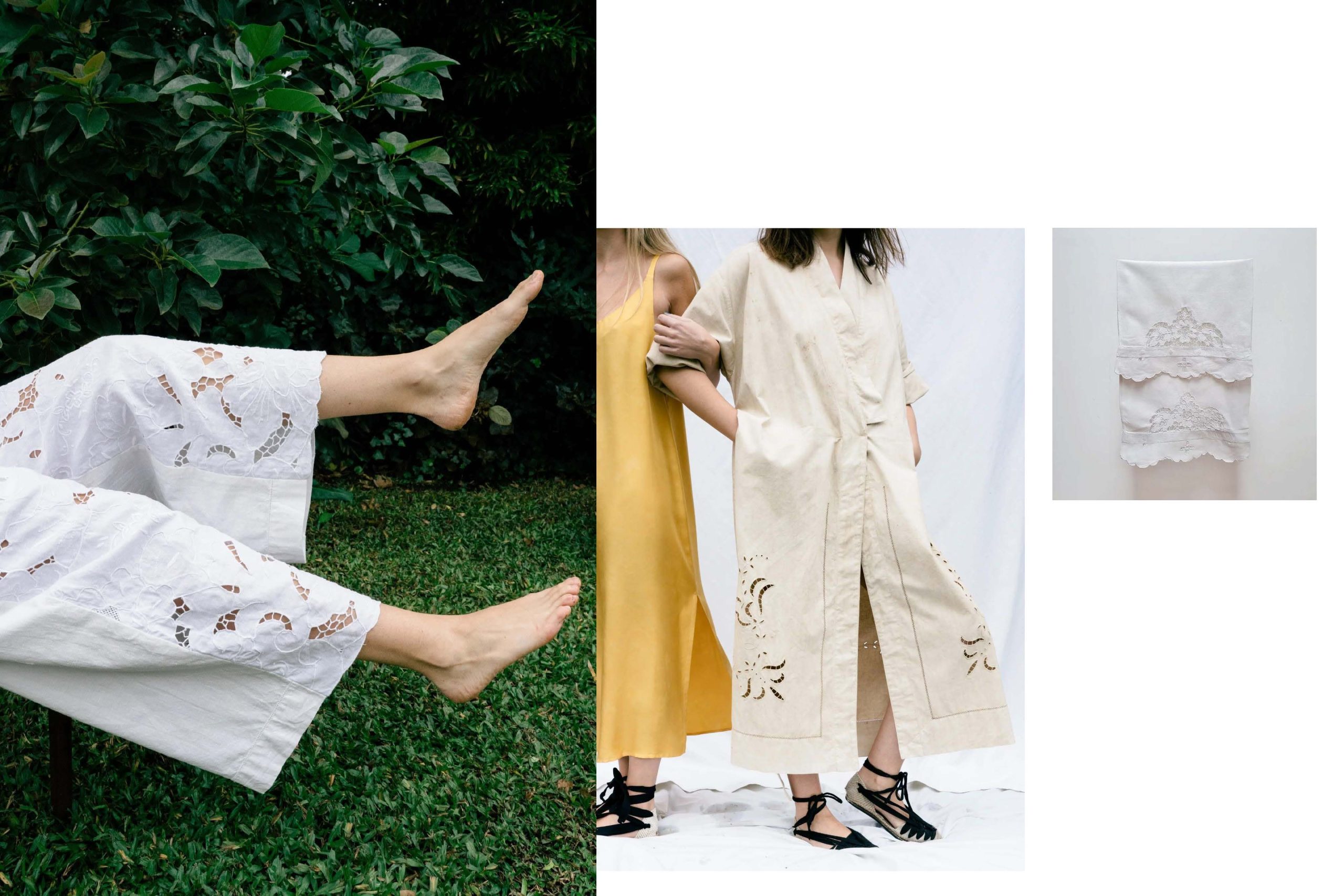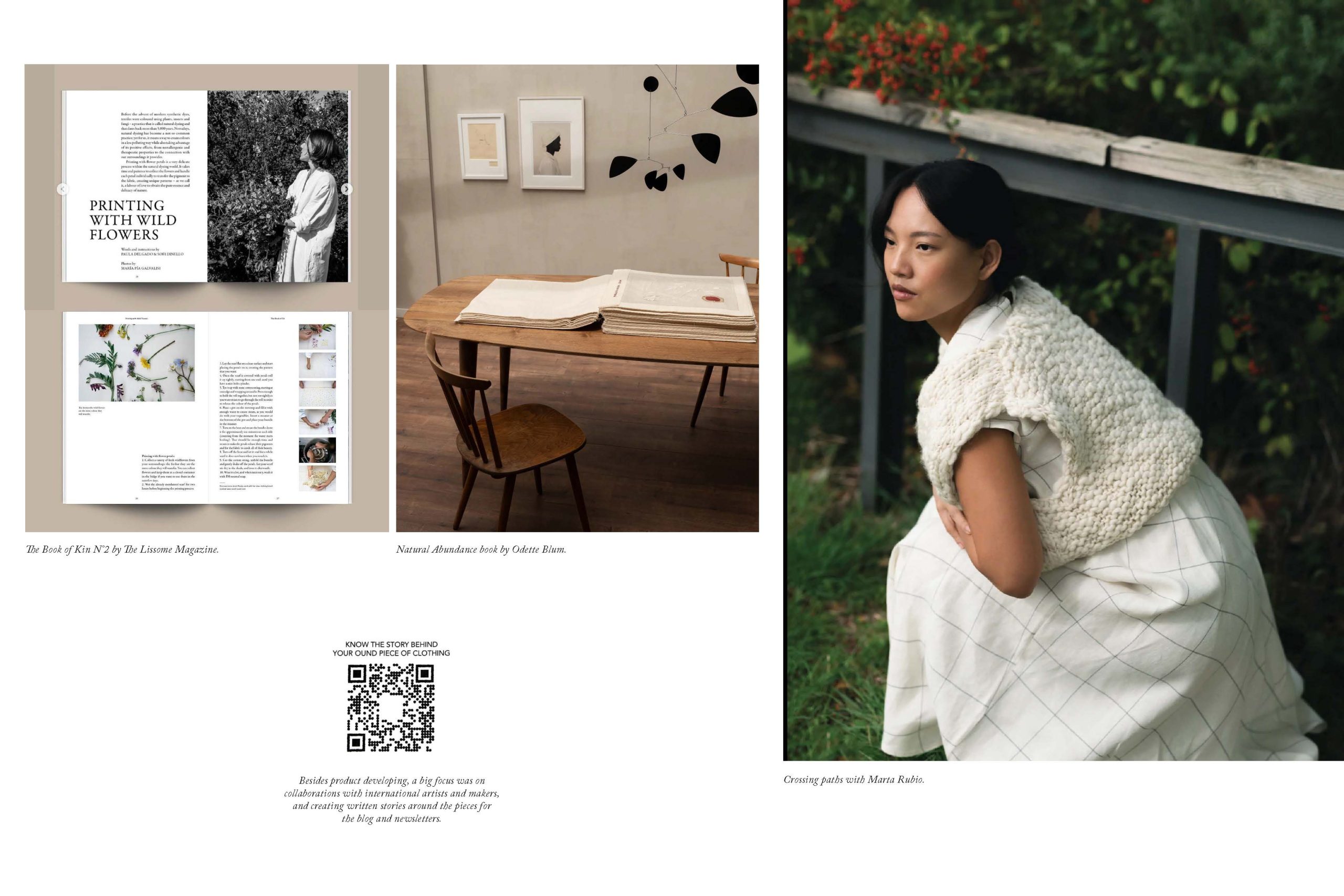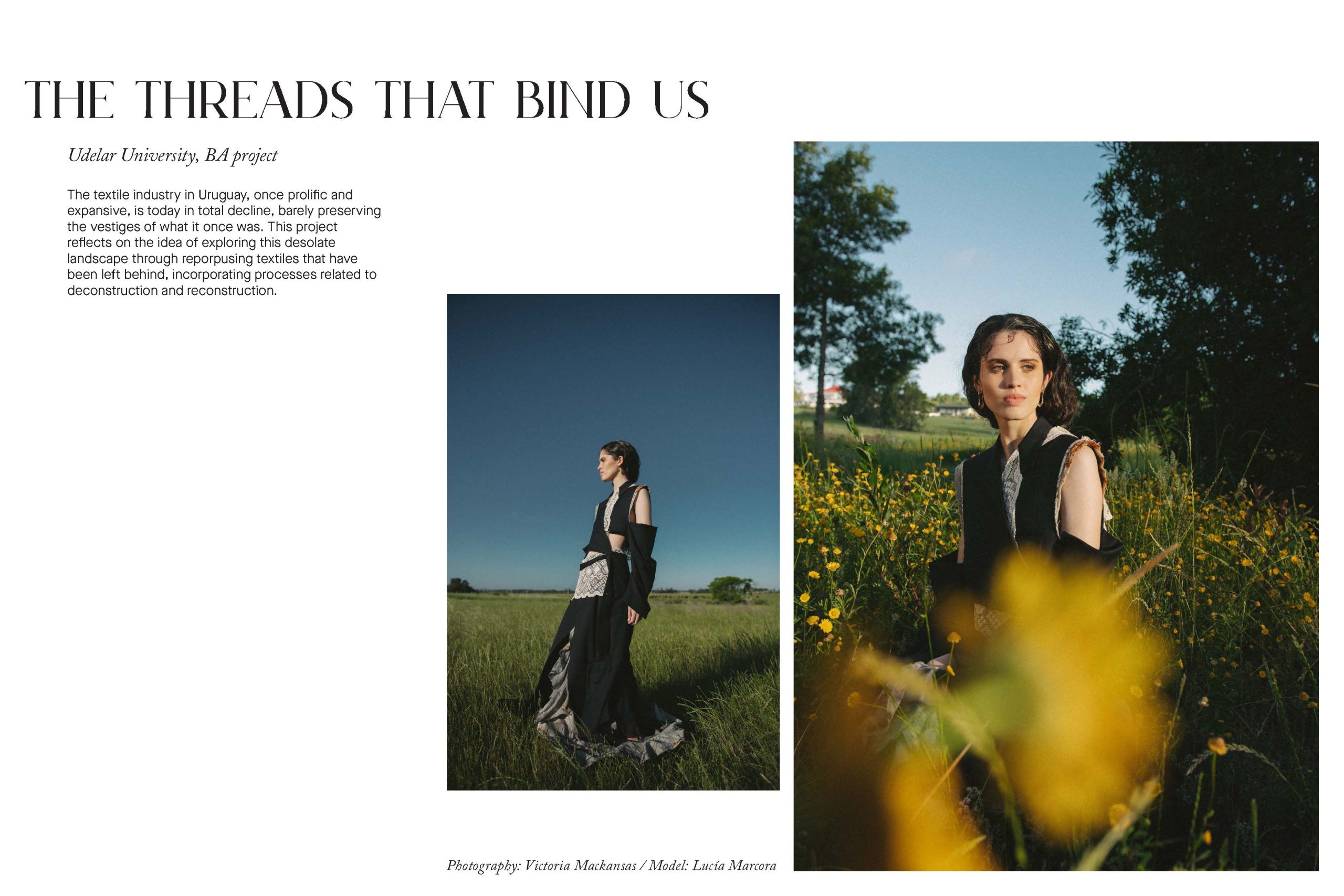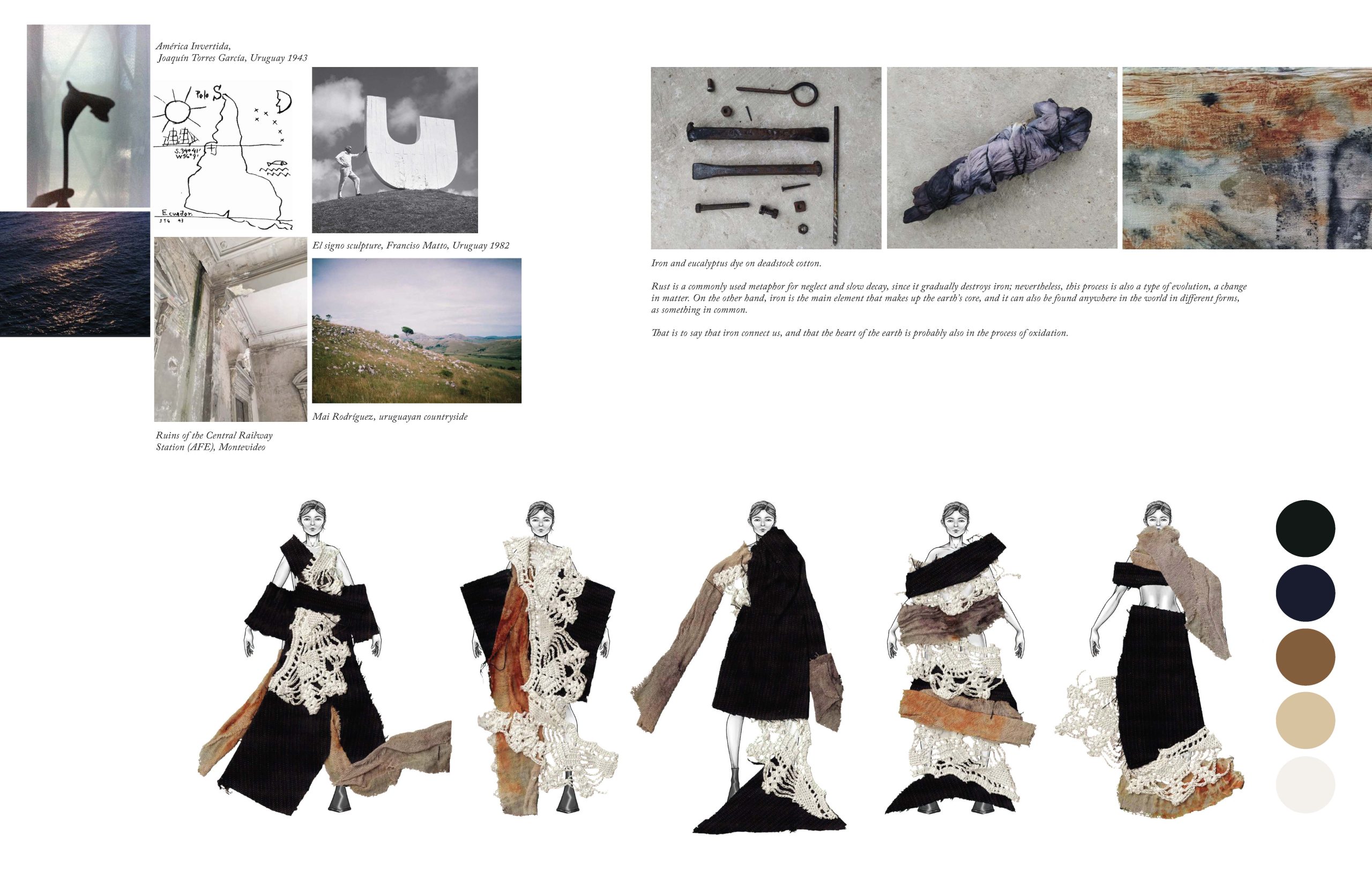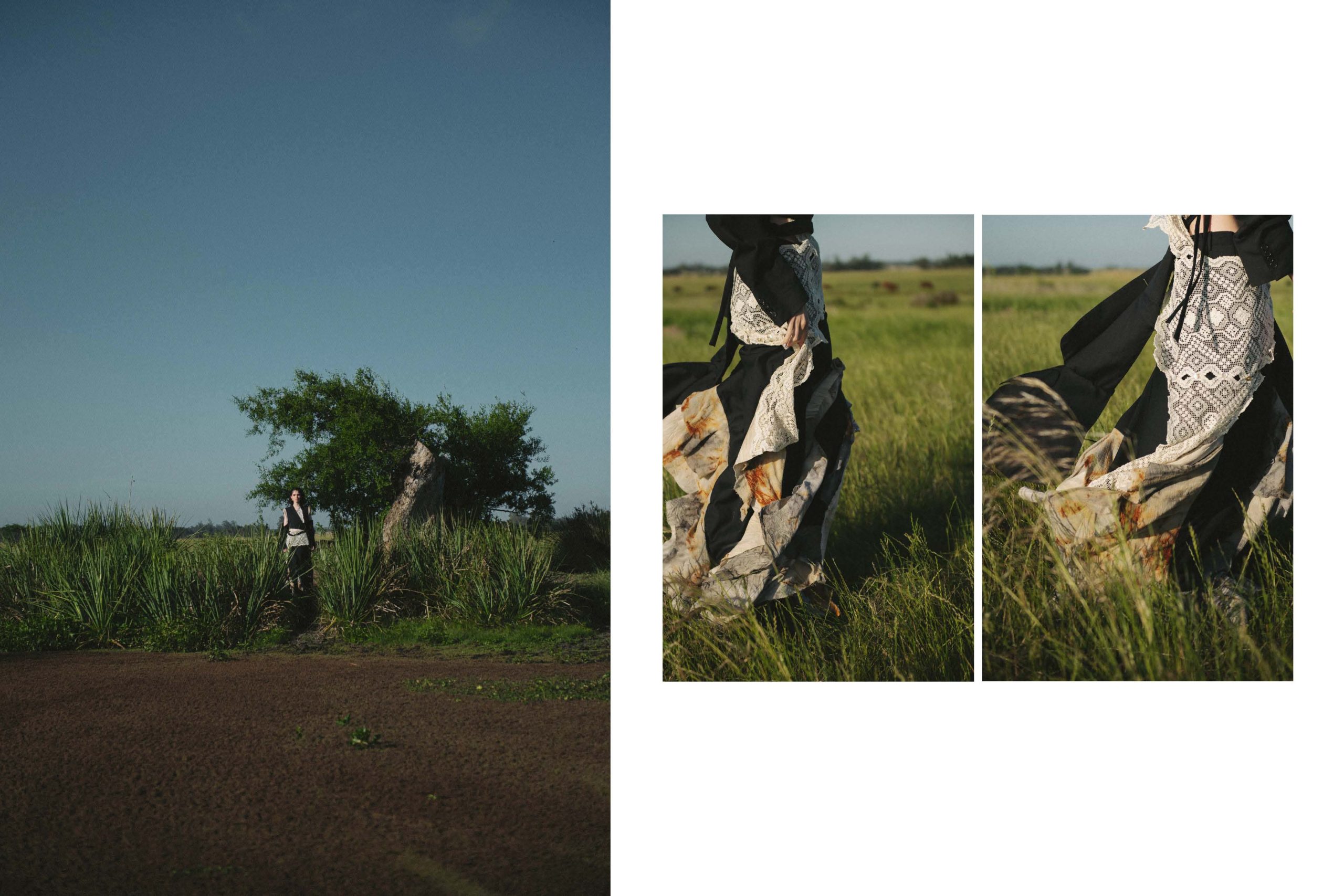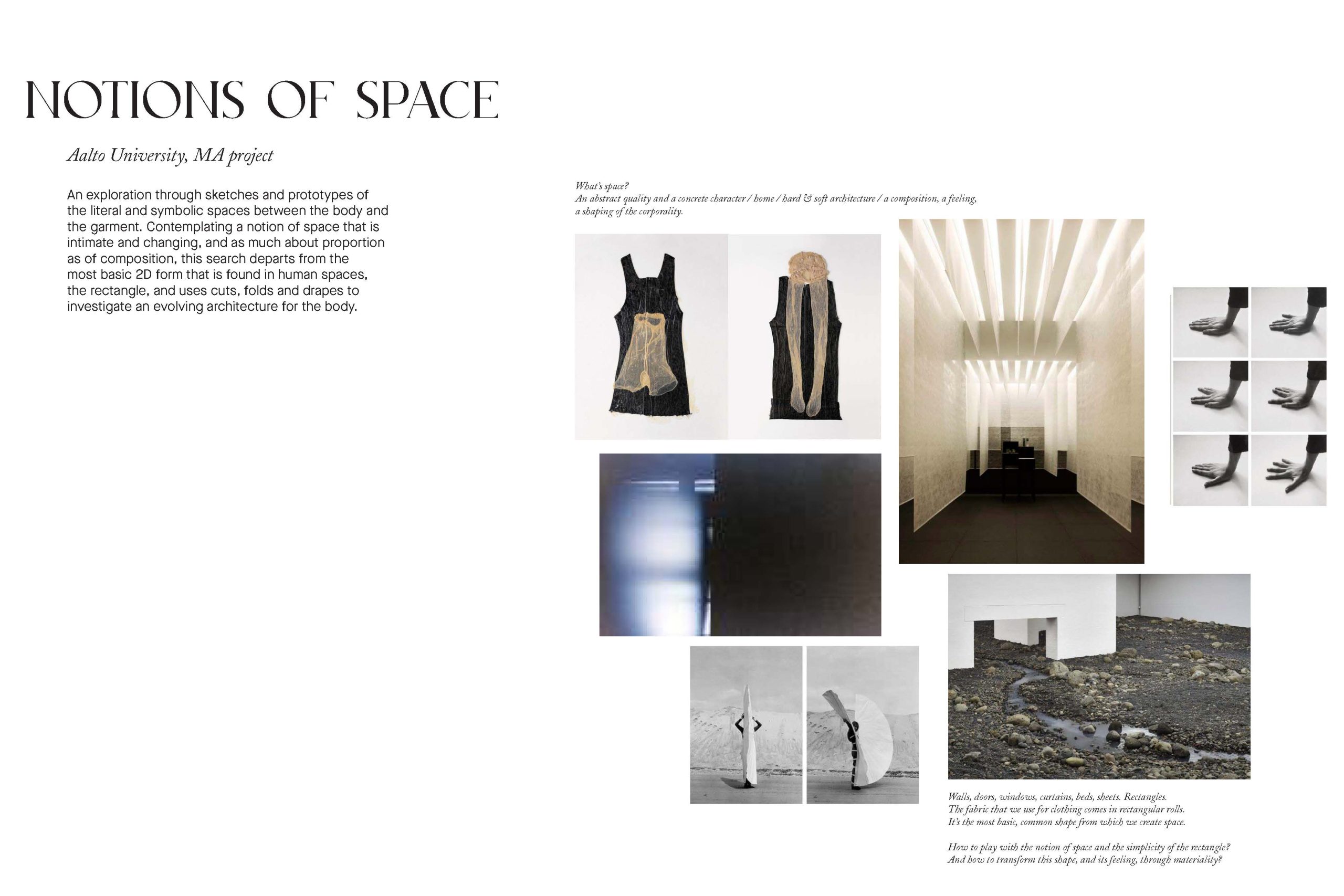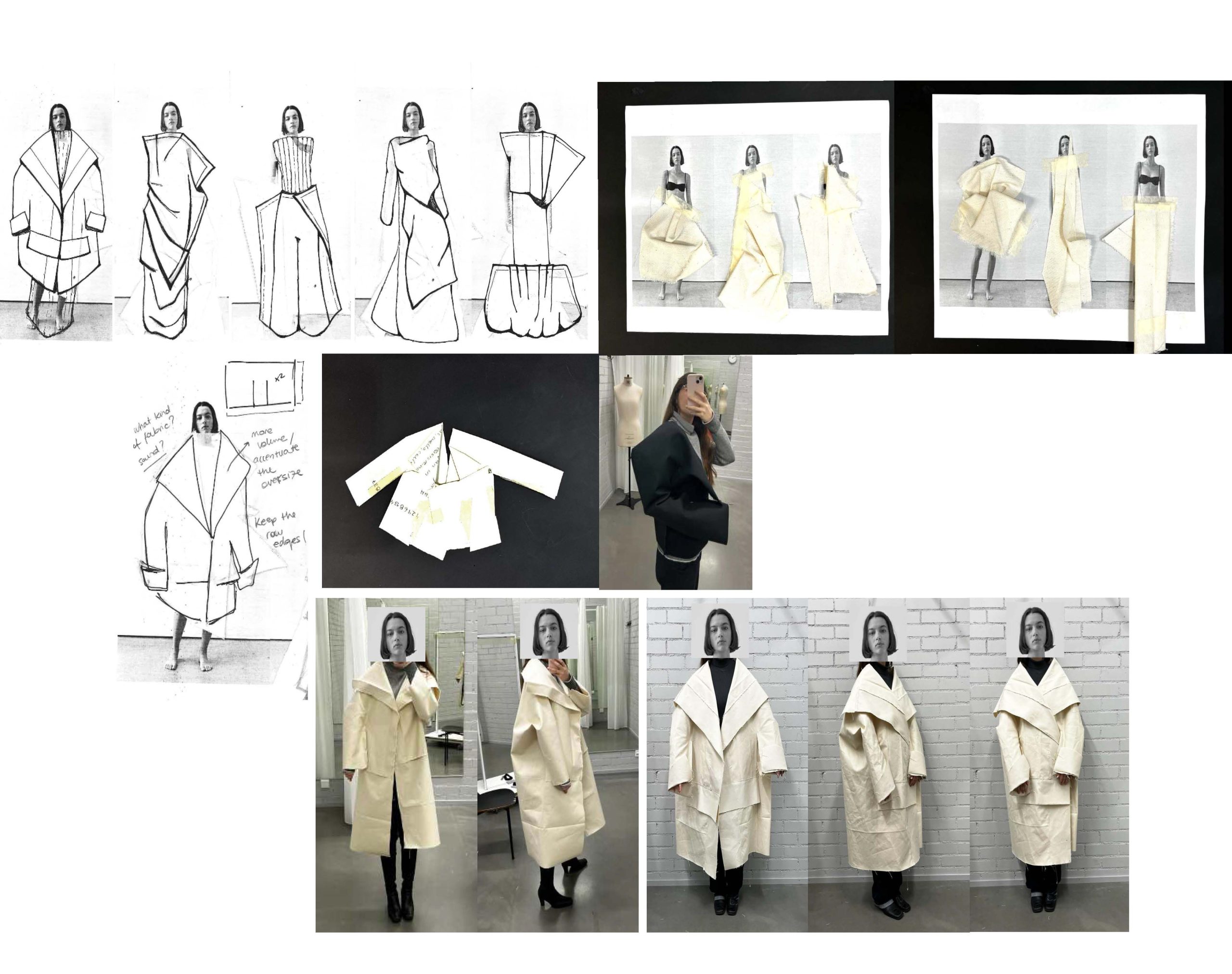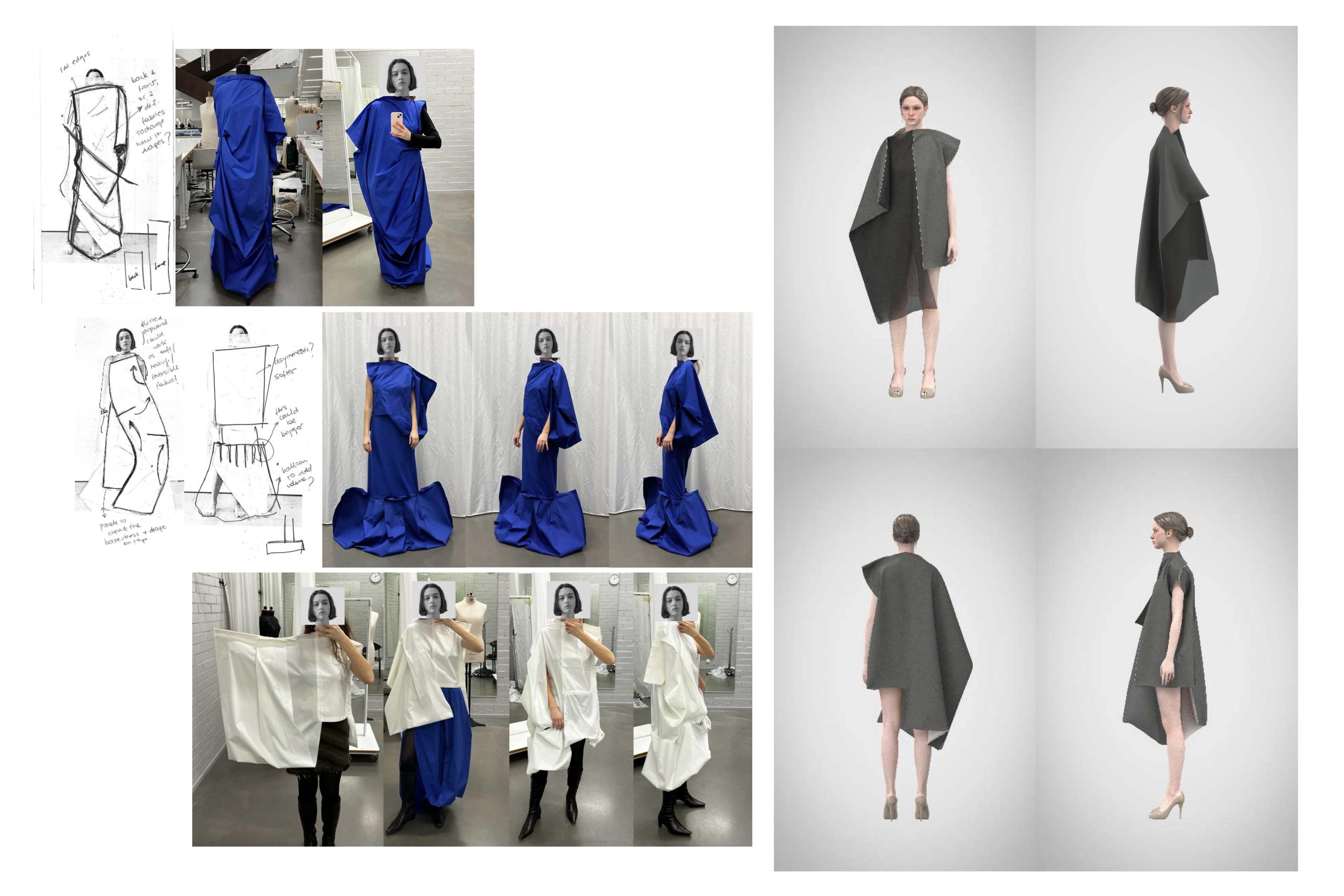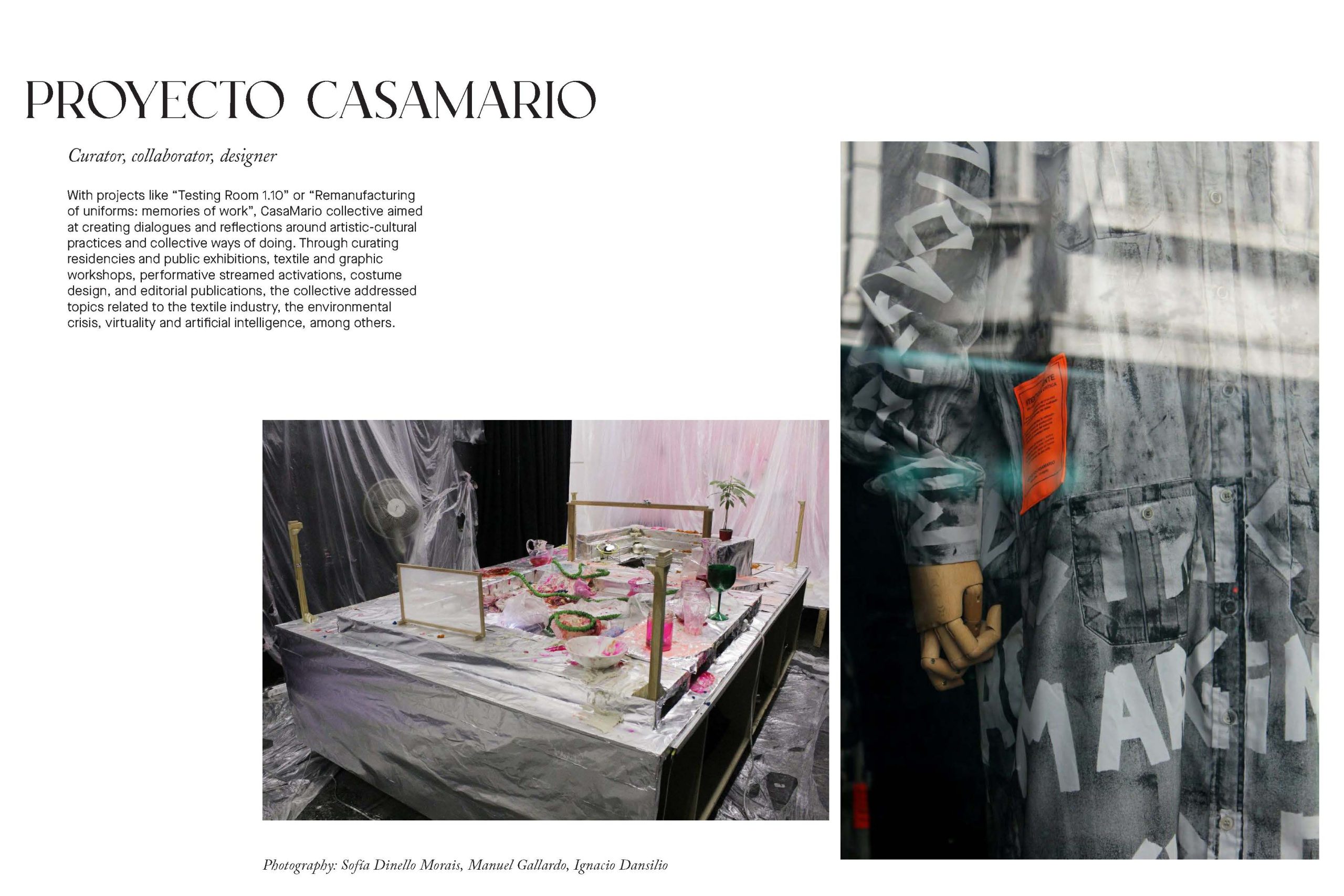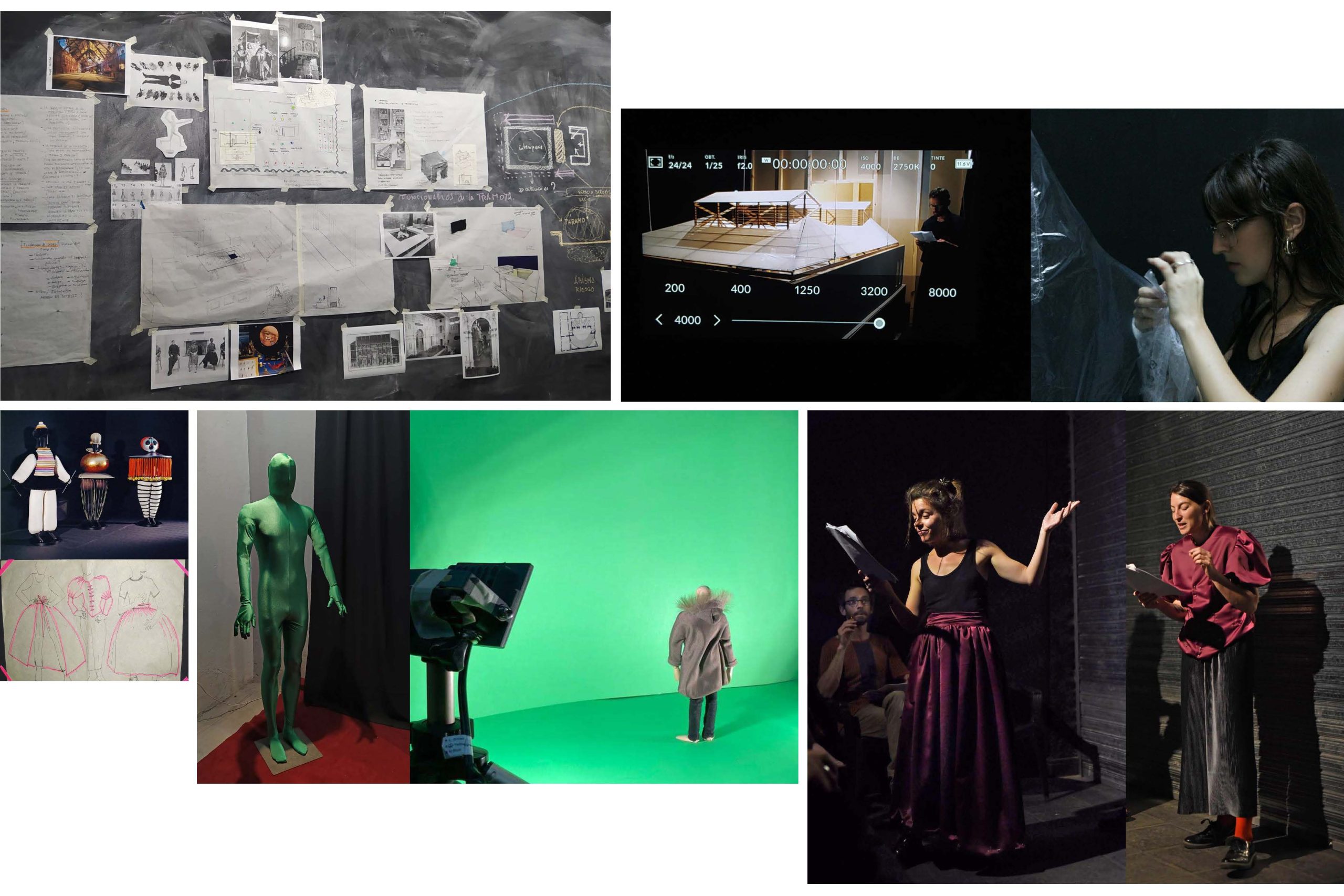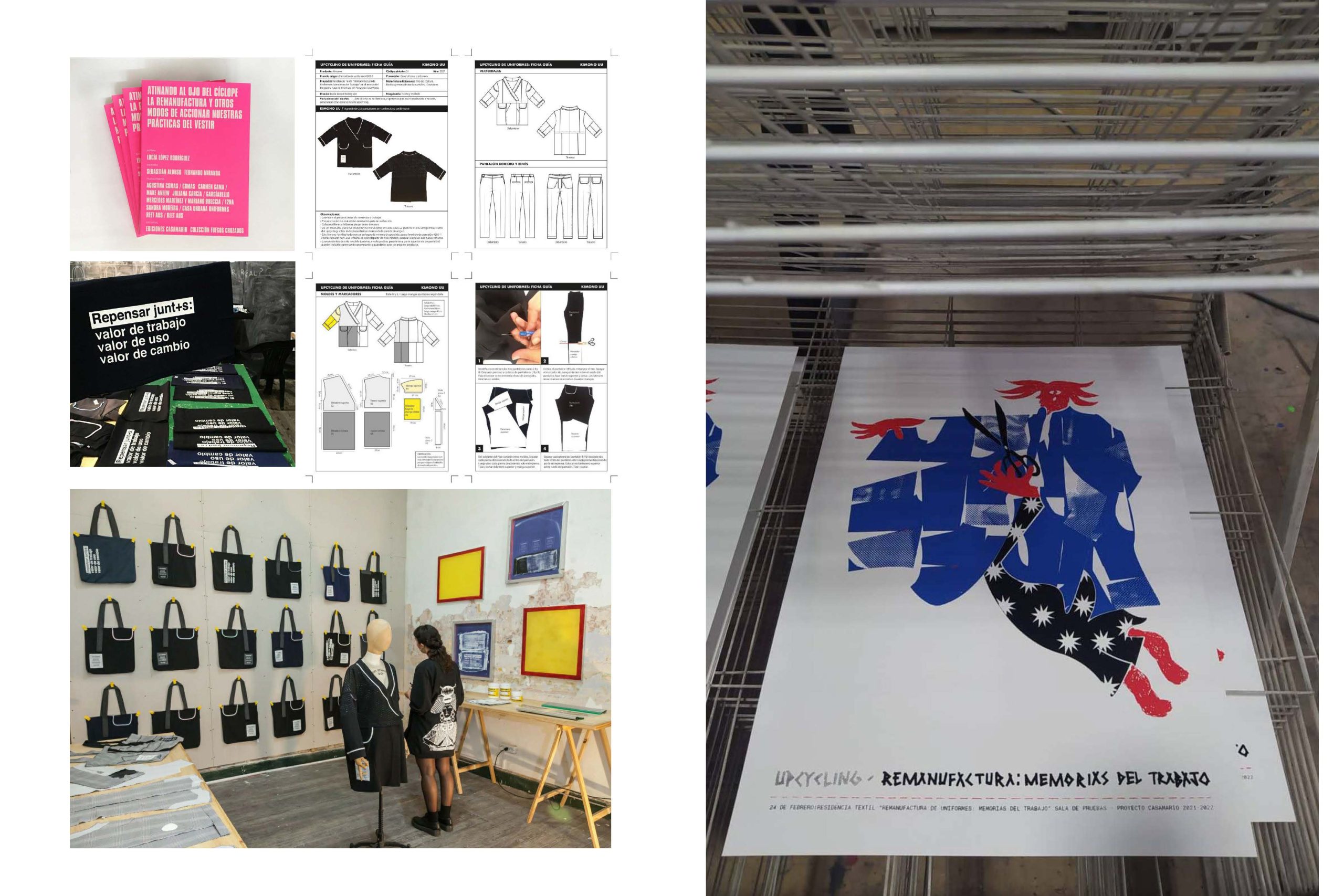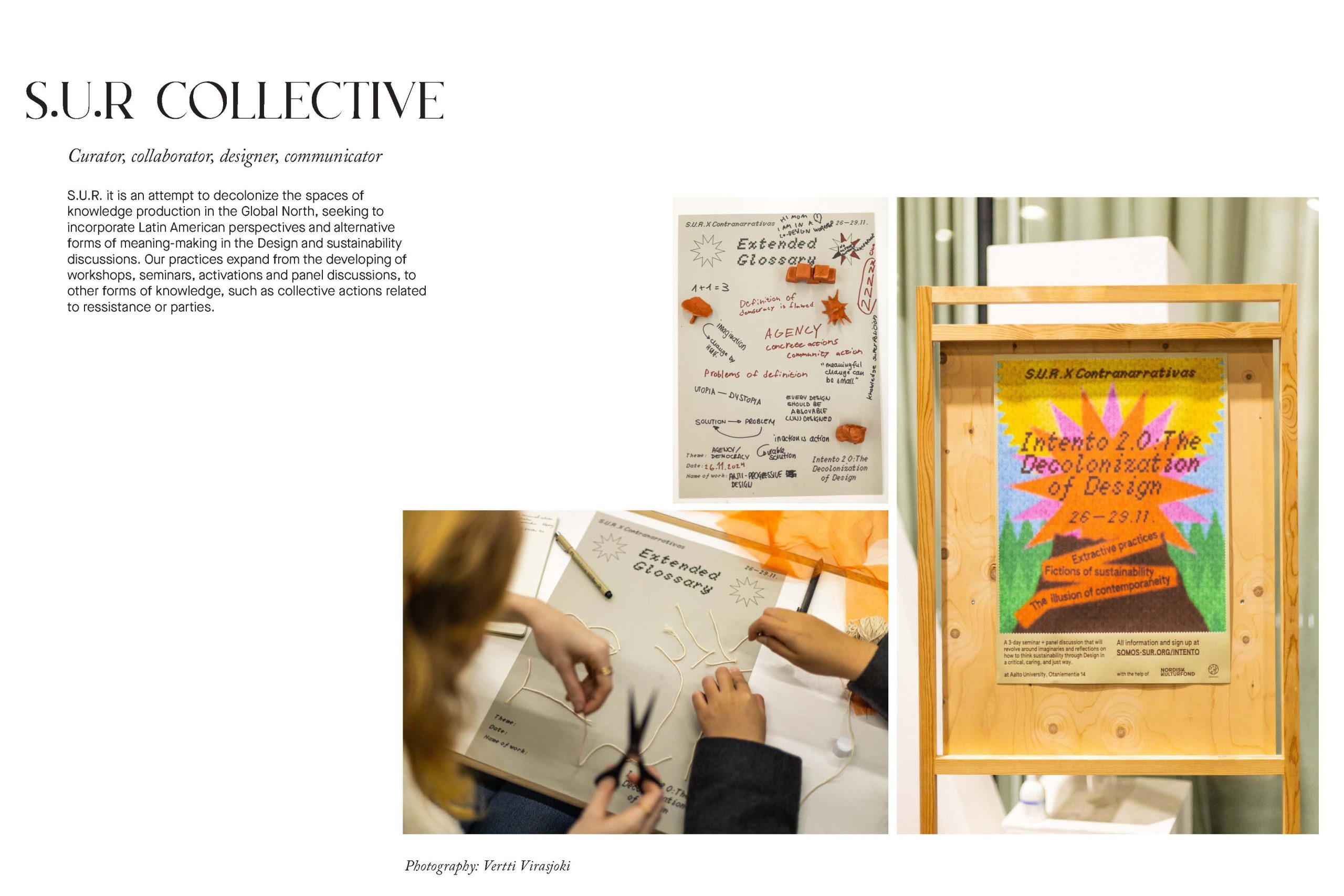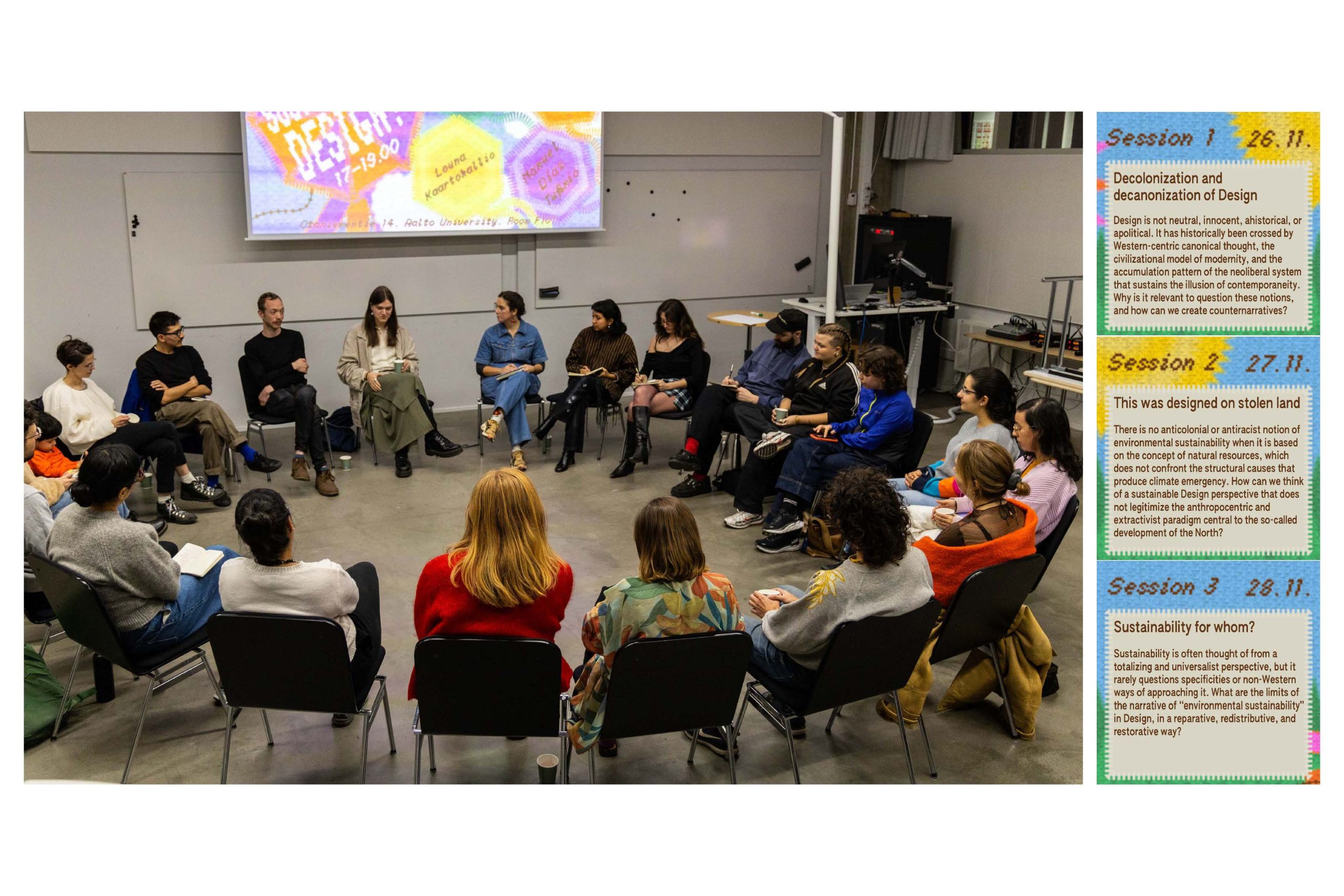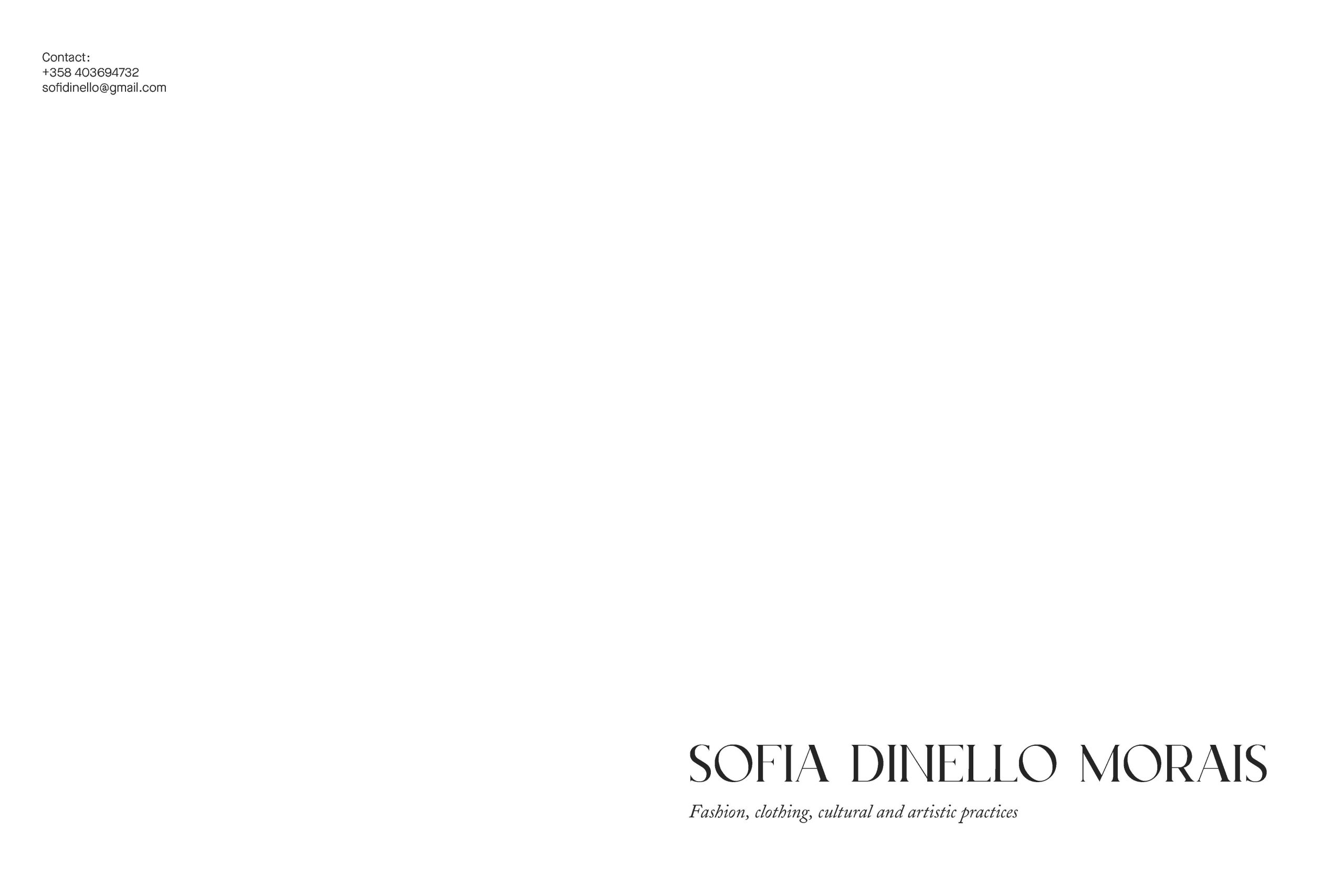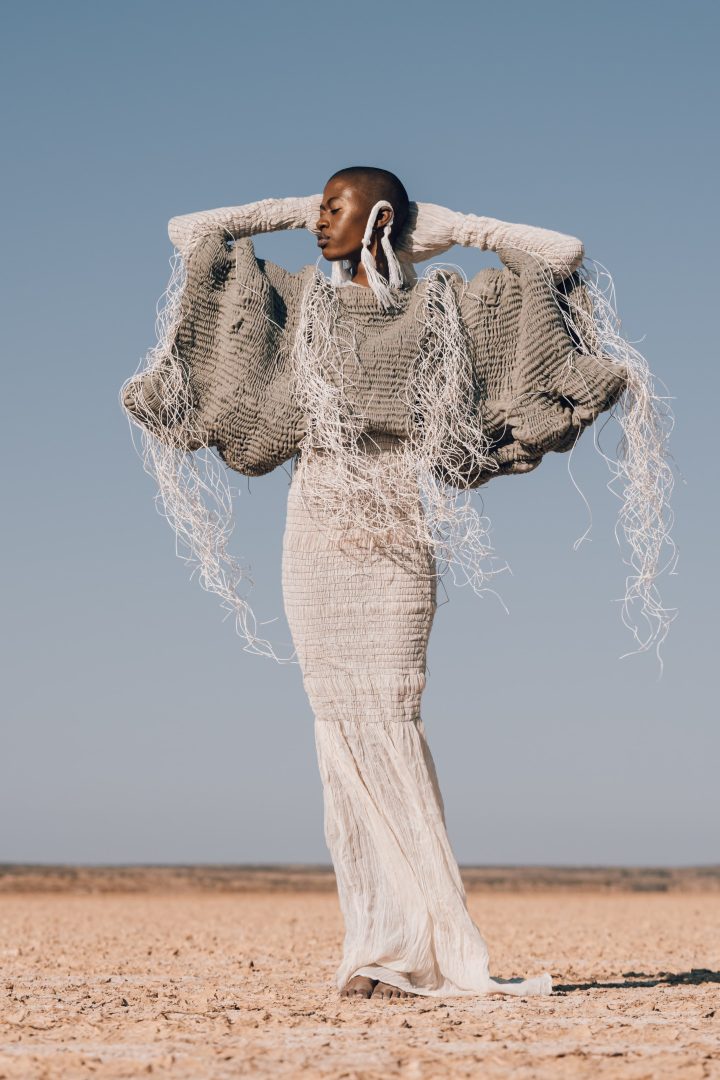Sofía Dinello Morais
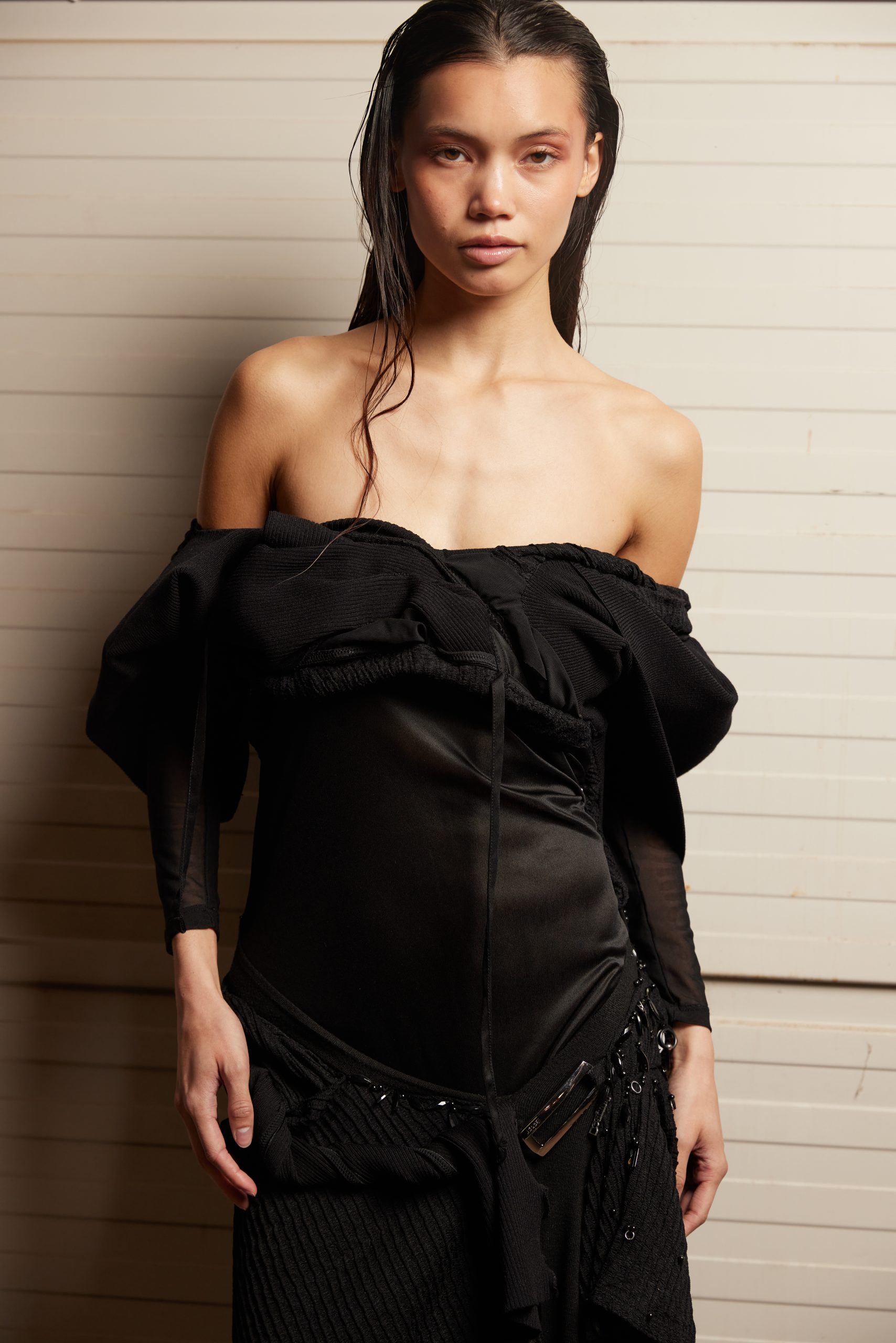
For all that is roots, fabrics, and fluids
Seeking to reclaim and embrace the materiality of discarded garments as active fragments, carriers of memory and meaning, the work explores how new pieces are born through the notions of collage and emotional, associative material thinking. From landscape erosion, displacement, accumulation and fragility; images of water and tributes to the sea goddess of certain South American cults; a desire for softness and affection; and an admiration for the traces of handwork, the process deconstructs and merges second-hand pieces with a larger mixture of own concerns and intimacies, acting as a repetitive meditation on what endures, what’s untainted, and what’s given value and time.
SUPPORT
European Union’s Horizon 2020 research and innovation programme, Textile Recycling Excellence, T-REX project
Materials: UFF
COLLABORATION
Photography: Sofia Kulianu
ADVISORS
Kasia Gorniak, Hanna-Kaisa Korolainen
SUPERVISOR
Kirsi Niinimäki
(IG)
@ sof.din
Seeking to reclaim and embrace the materiality of discarded garments as active fragments, carriers of memory and meaning, Sofía’s MA thesis collection explores how new pieces are born through the notions of collage and emotional, associative material thinking.
– I find myself especially drawn to reconsidering what currently exists, to working with things that have a specific constitution that I can touch, reflect on, and transform. I think and feel through these combinations that don’t necessarily relate to each other, but that, to me, speak of something connected and profound.
The work emerges from an instinctive attraction to certain elements of second-hand garments, deconstructing and mixing them to create new pieces. They take shape by adding and removing, stretching, twisting, folding, creasing, hand-sewing—evolving from a tension between what’s controlled and what’s allowed to overflow. There is also a strong focus on playing with existing fastenings and details that not only acknowledge and preserve aspects of the original garments, but that also contribute to new, unexpected forms.
– I don’t foresee the pieces in advance—there are no sketches, prototypes, or toiles. I create one garment, and another grows naturally after. The whole process is about paying attention to the meanings behind the decisions that keep repeating themselves, and that eventually lead somewhere.
There’s a feeling of fragility and subtle accumulation in motion that comes from the one-of-a-kind ways of constructing the pieces, but that also speaks of a larger mixture of own concerns and intimacies, which surface through the embodied practice. From landscape erosion and displacement; images of water and tributes to the sea goddess of certain South American cults; a desire for softness and affection; to an admiration for the traces of handwork—the process acts as a repetitive meditation on what endures, what’s precious, what’s untainted, and what’s given value and time.
